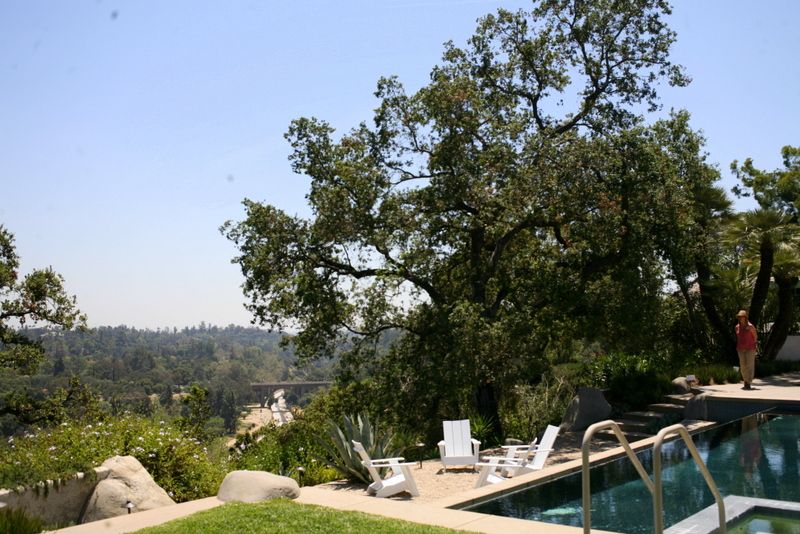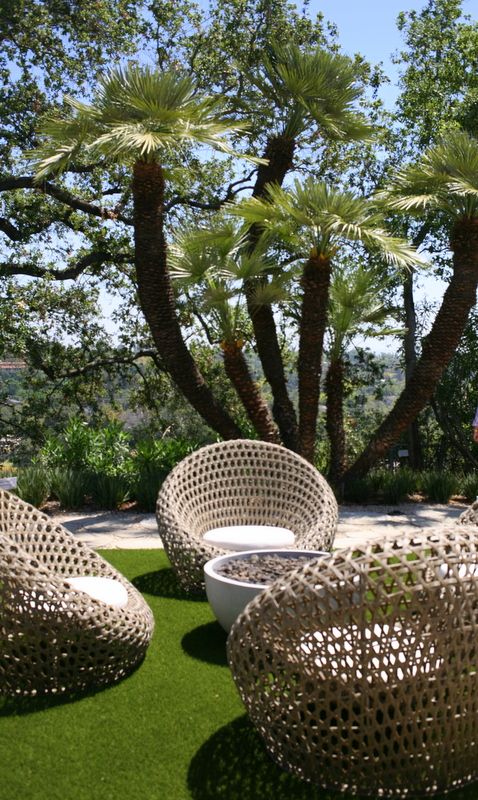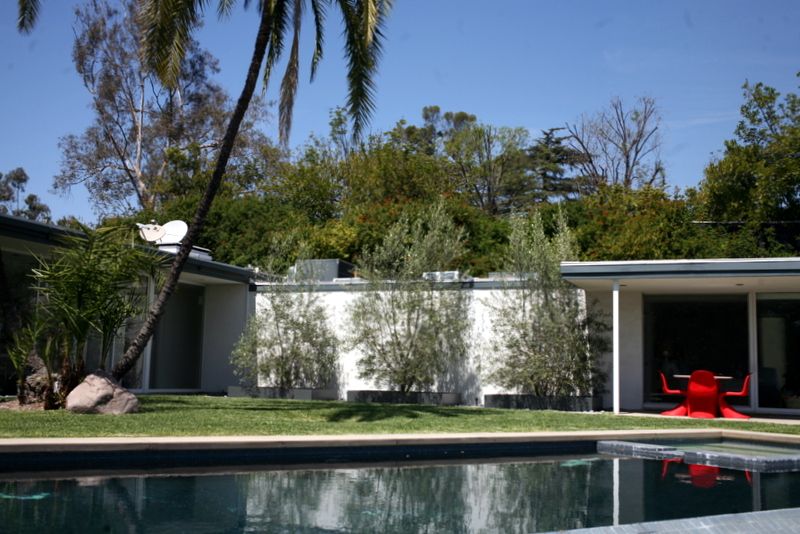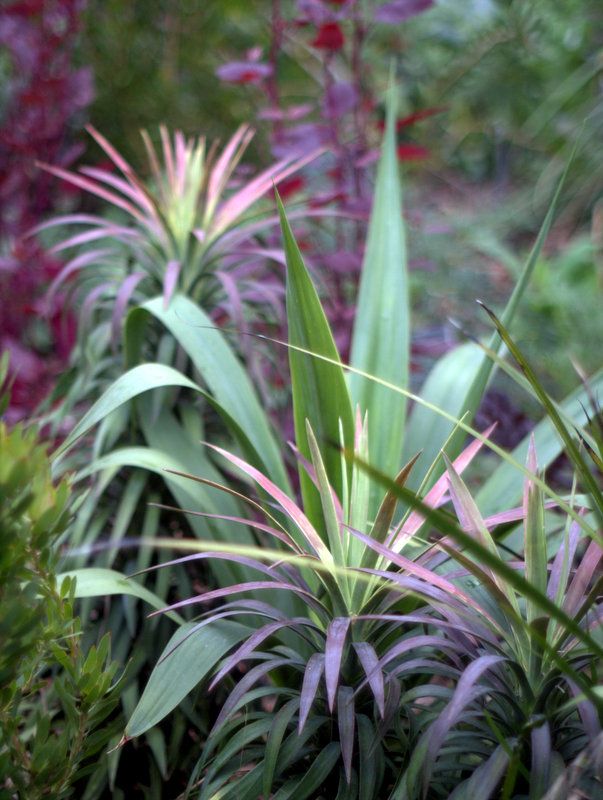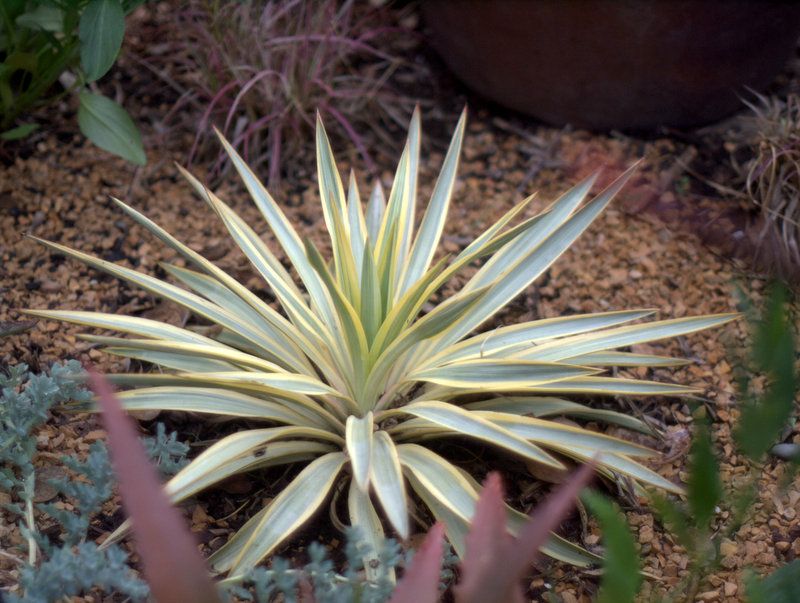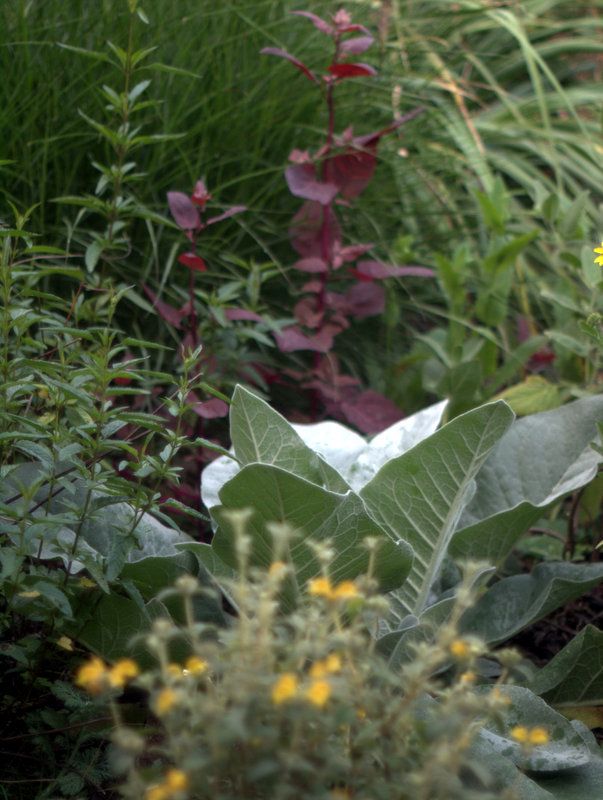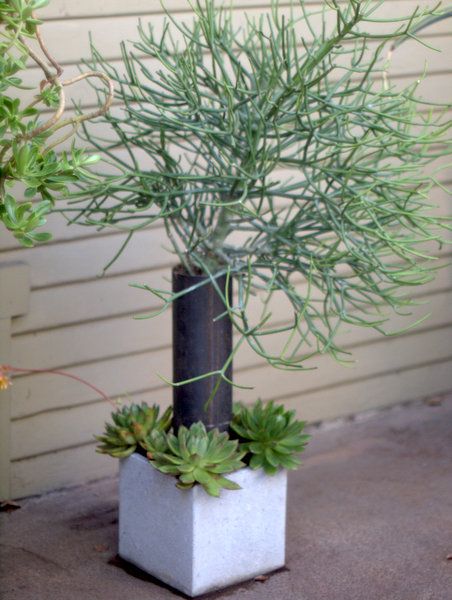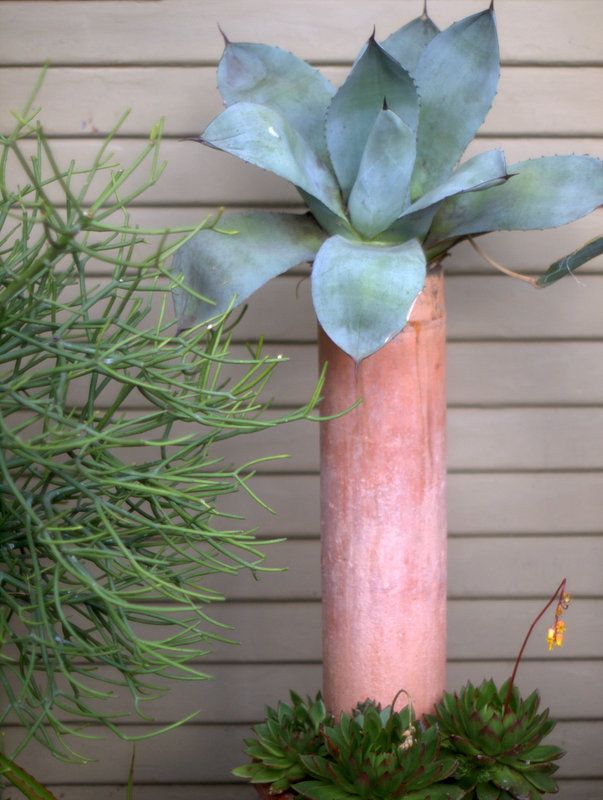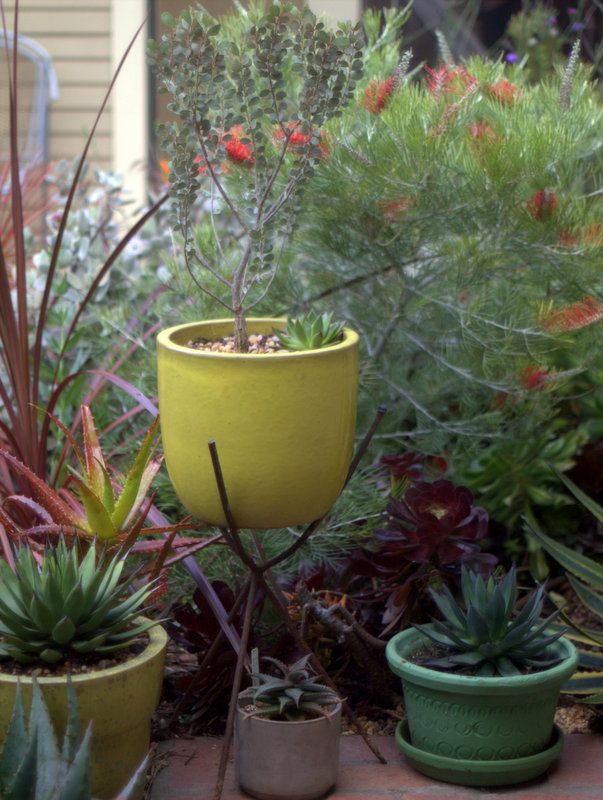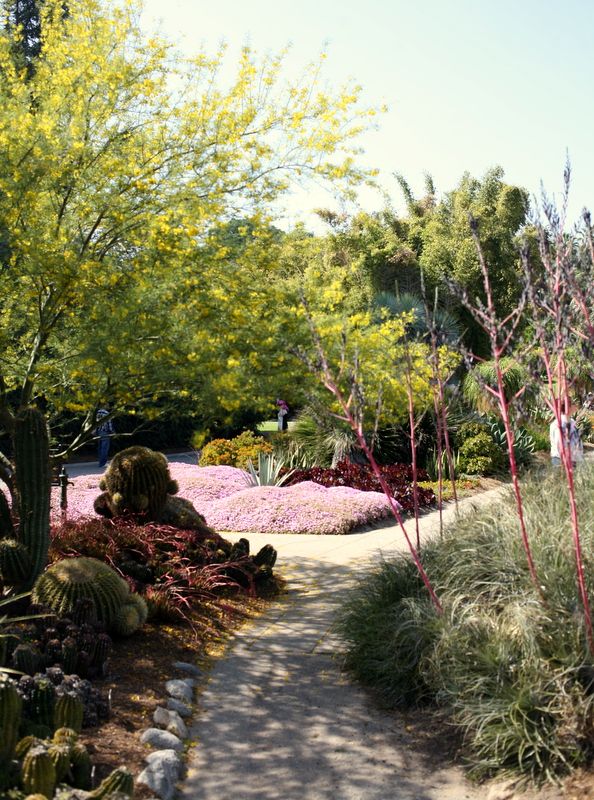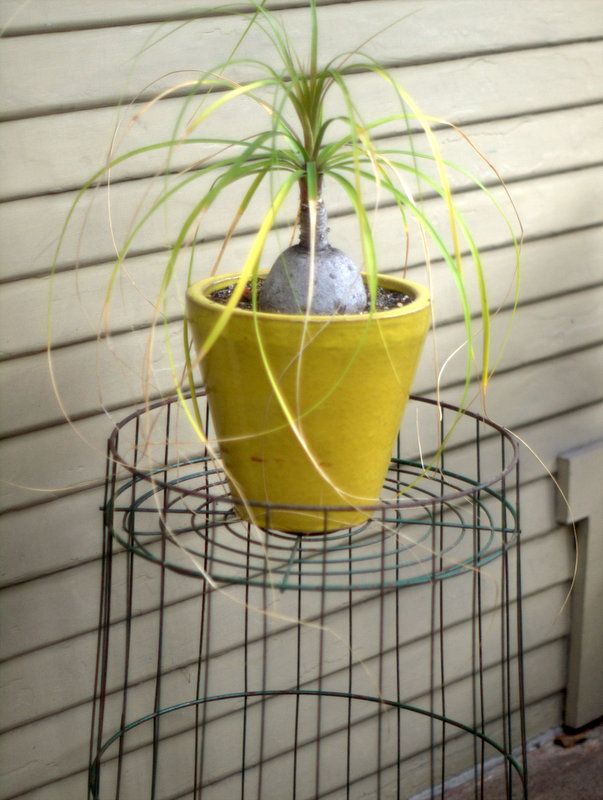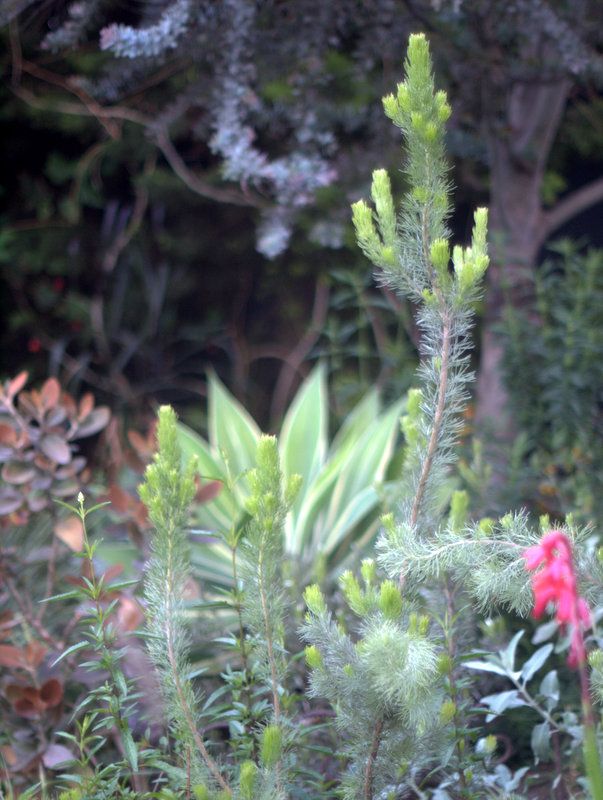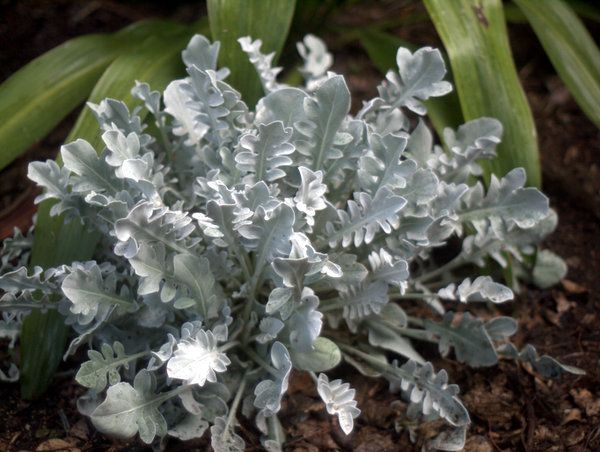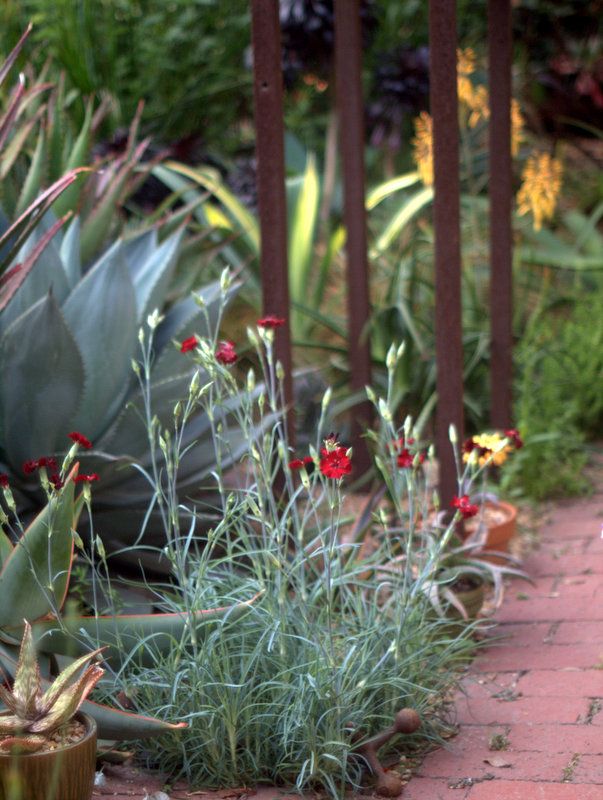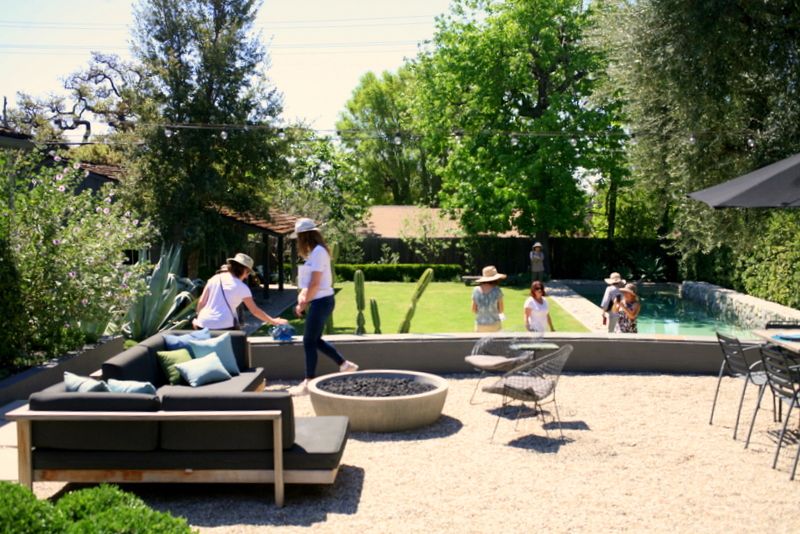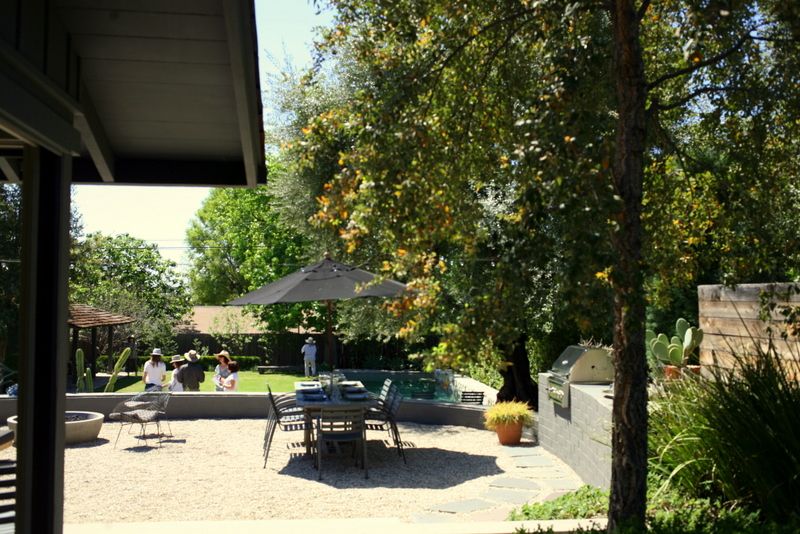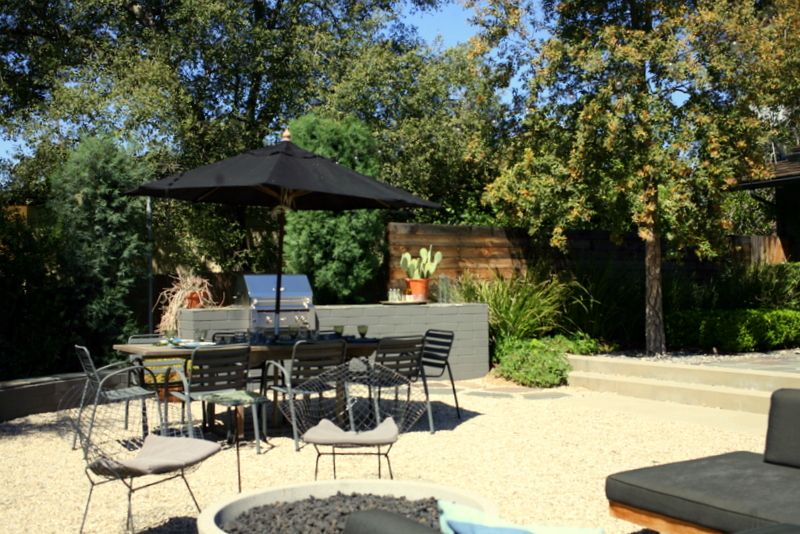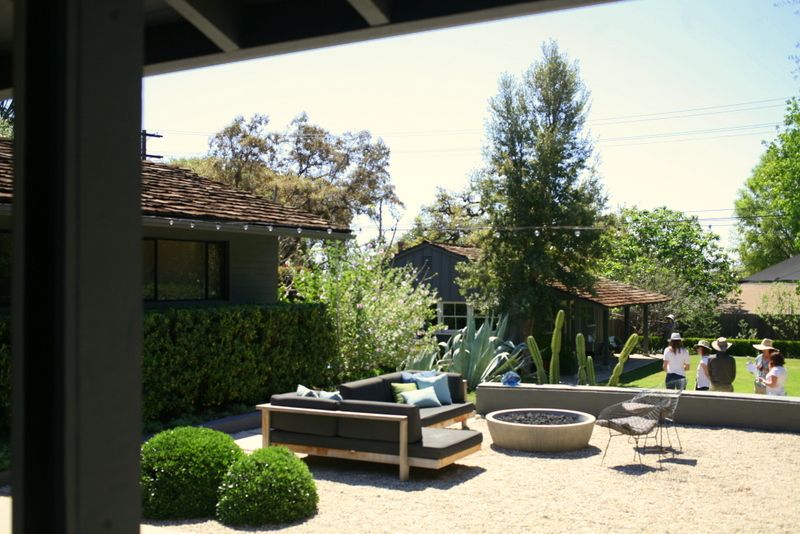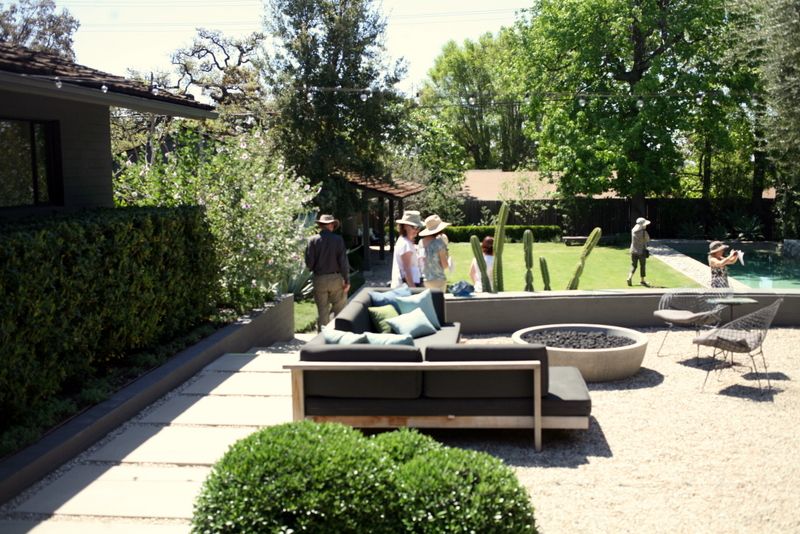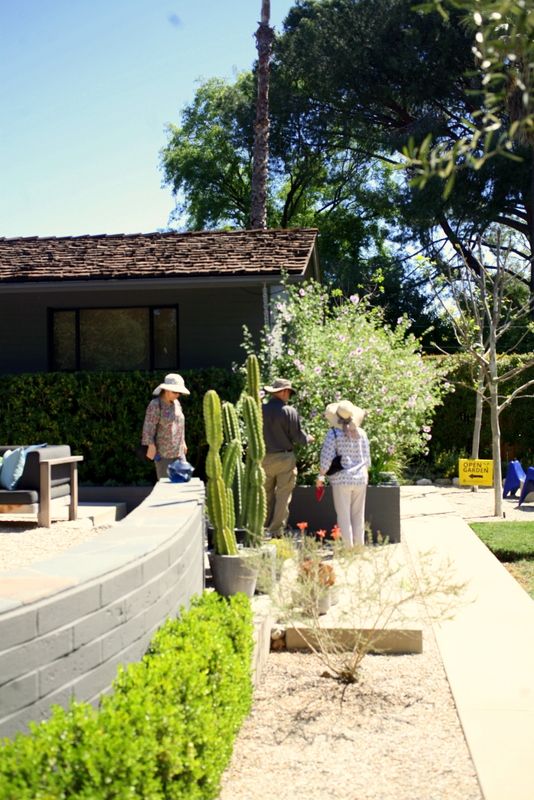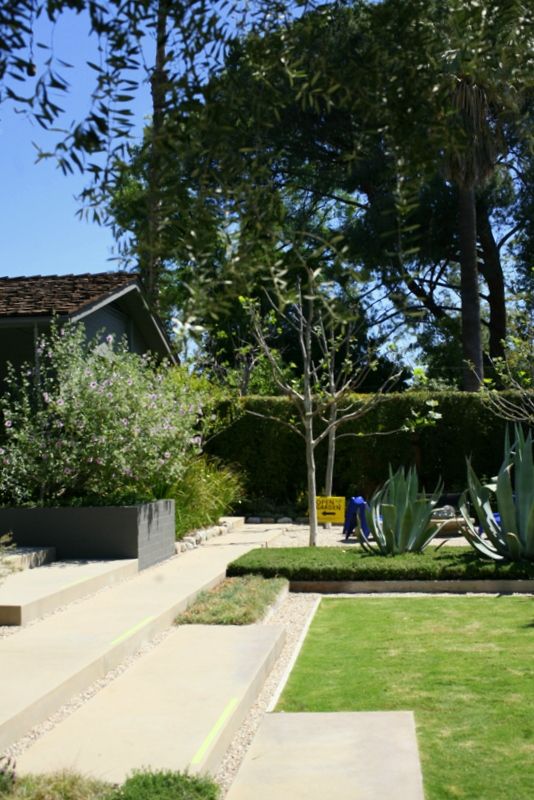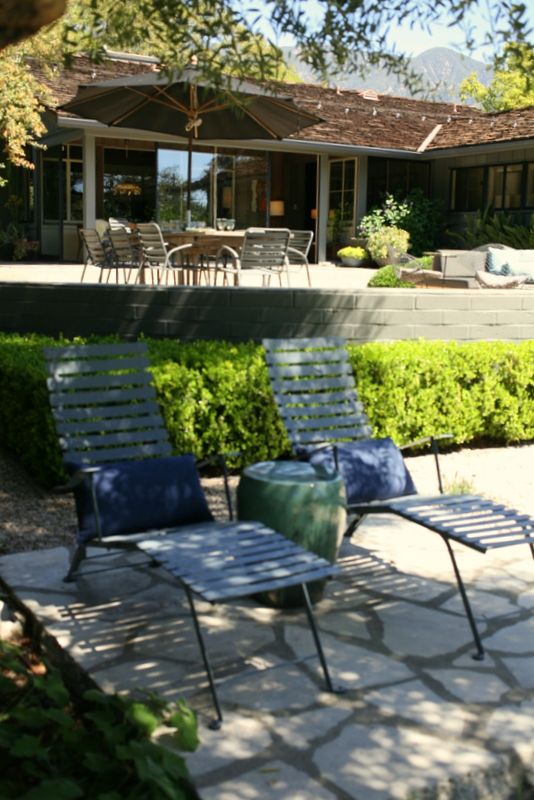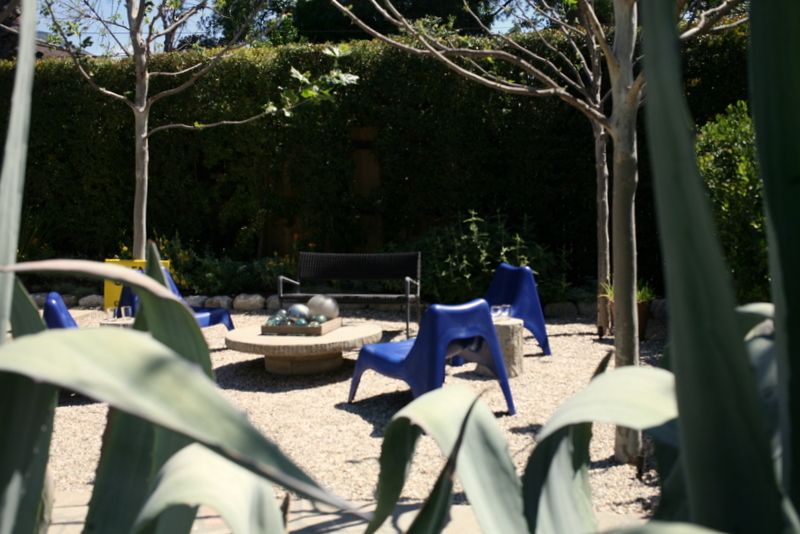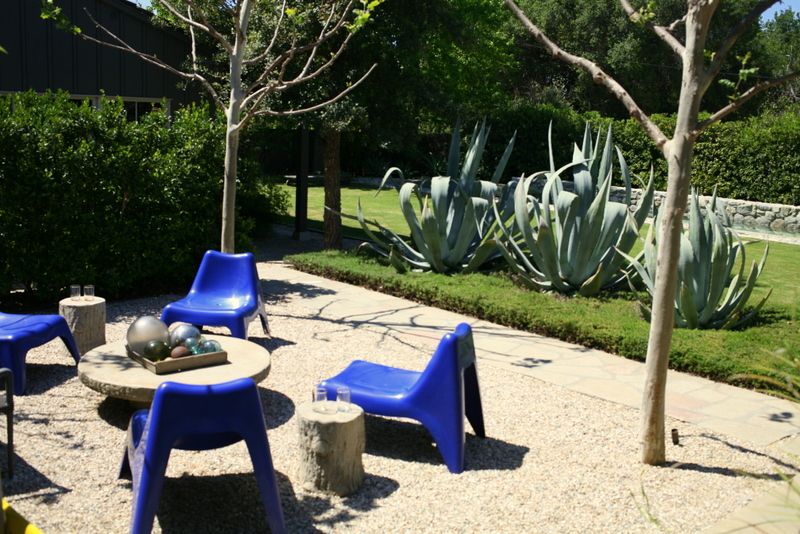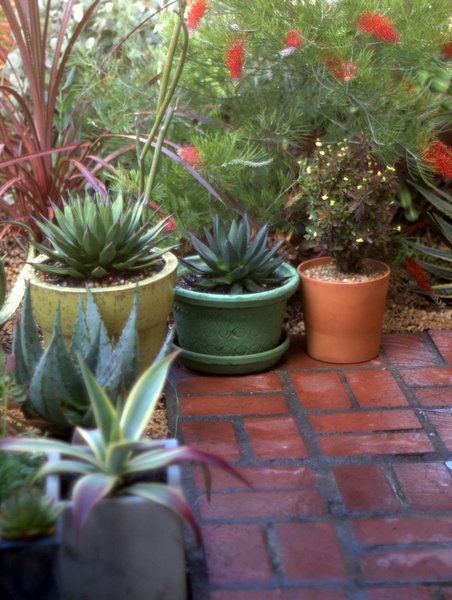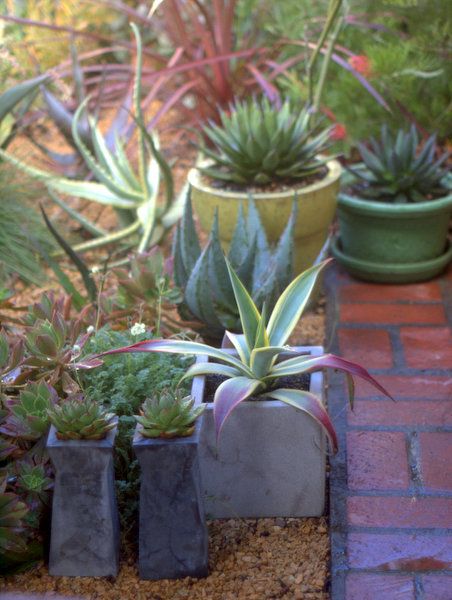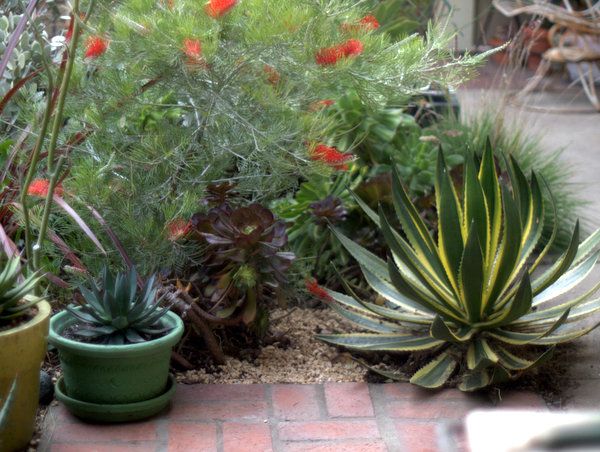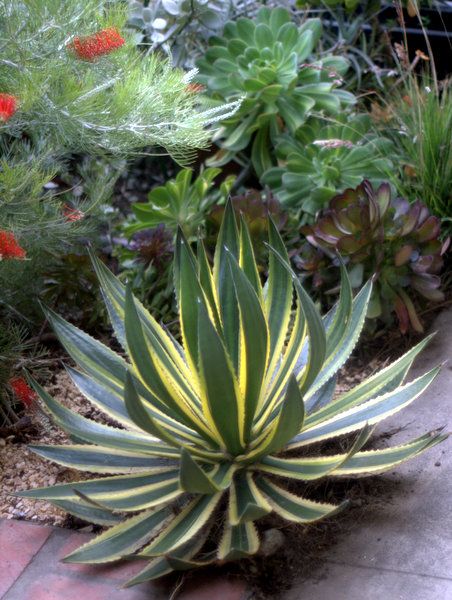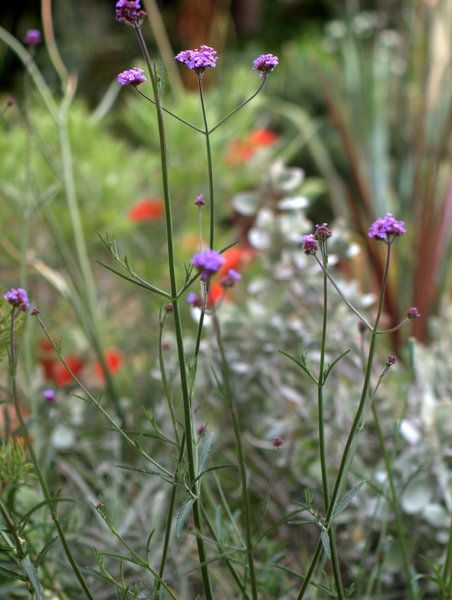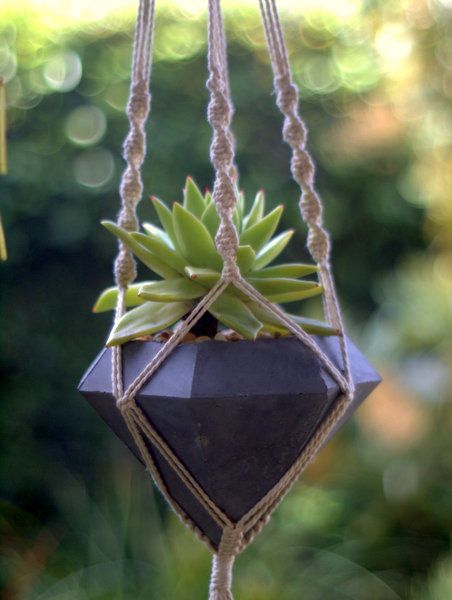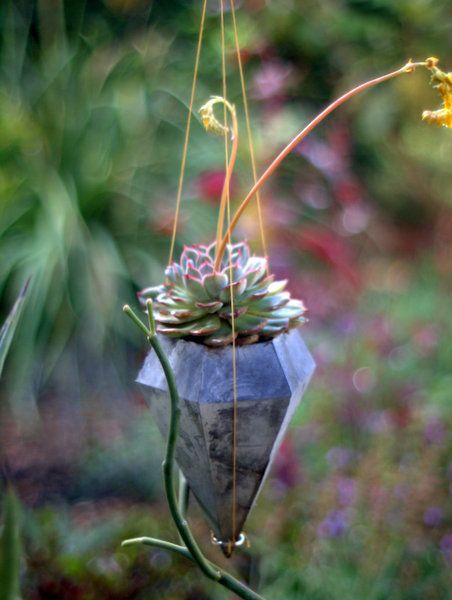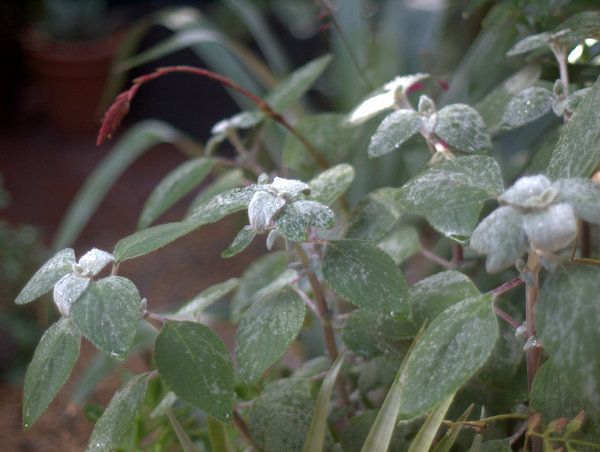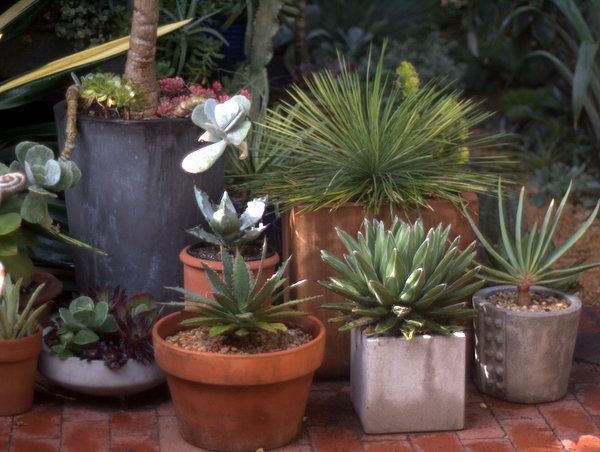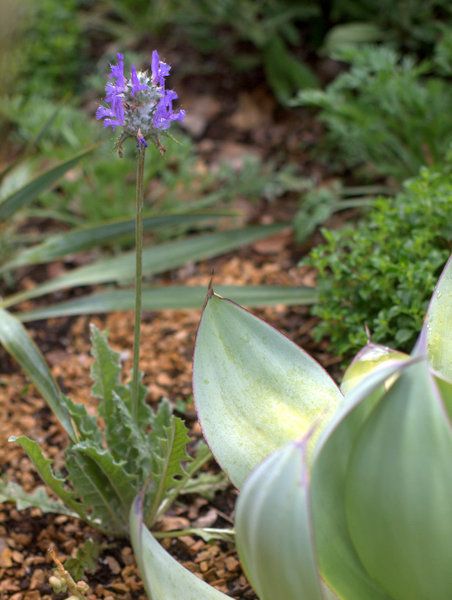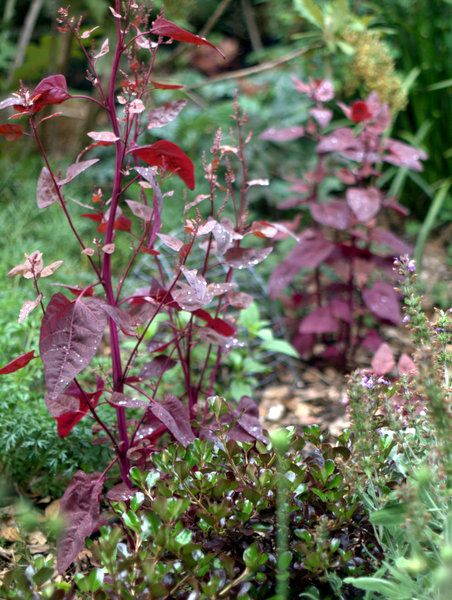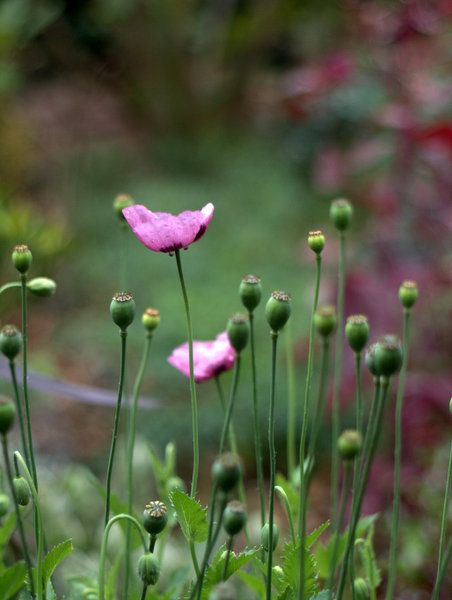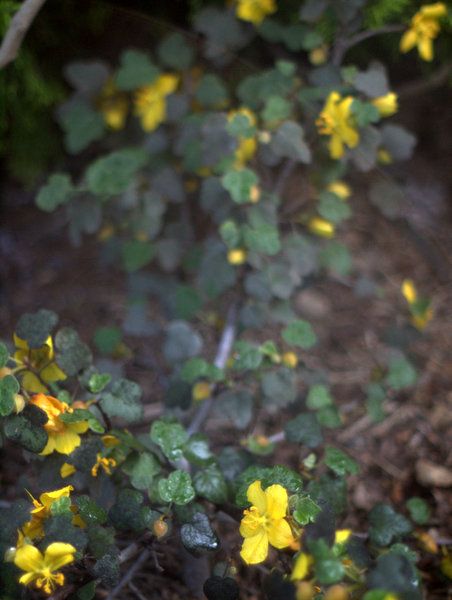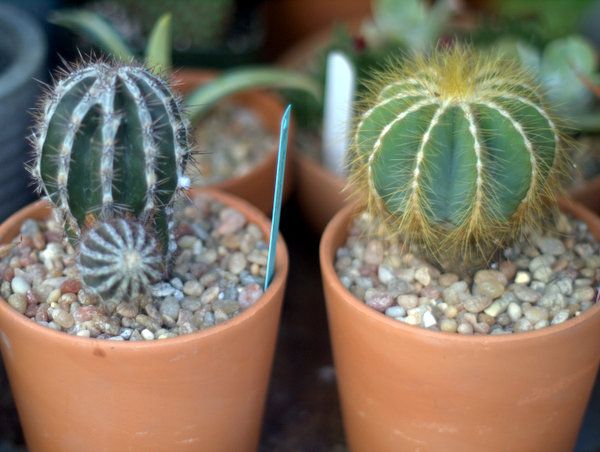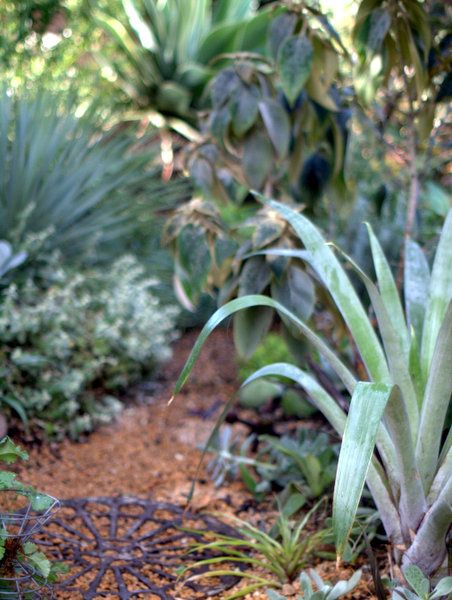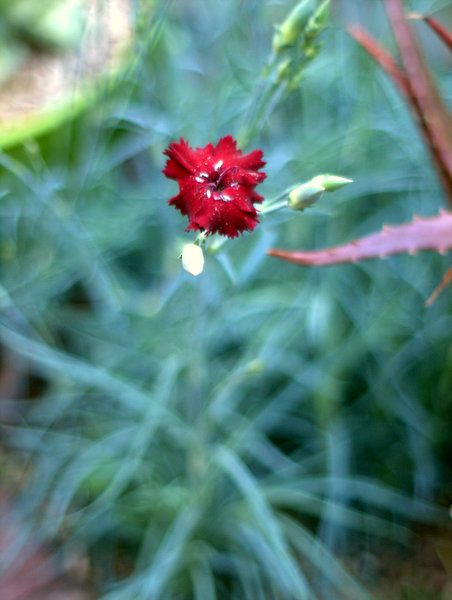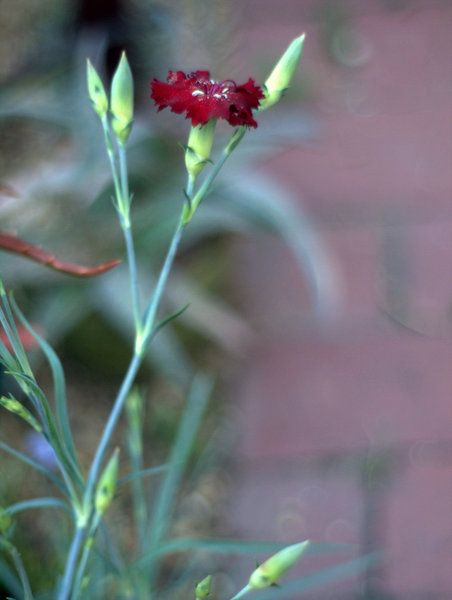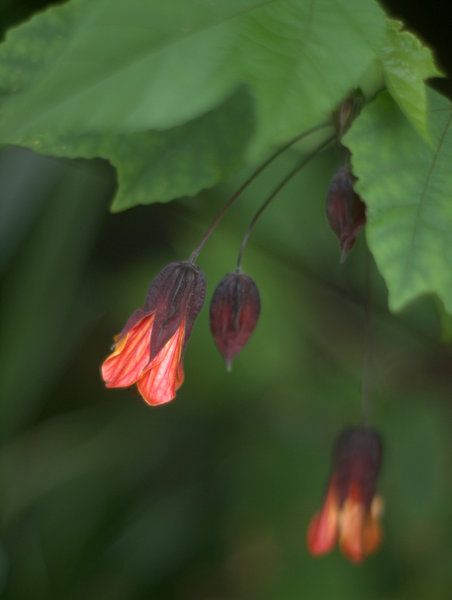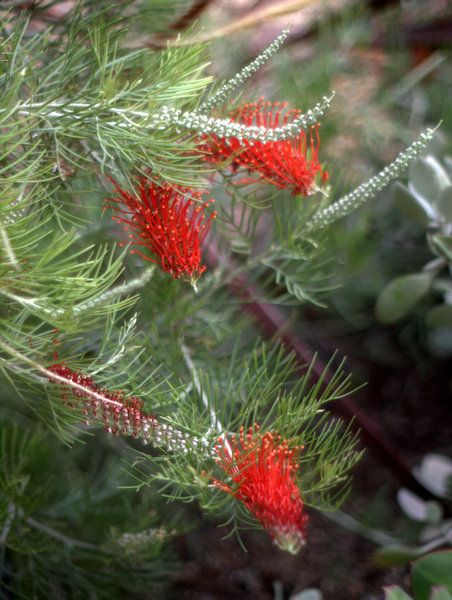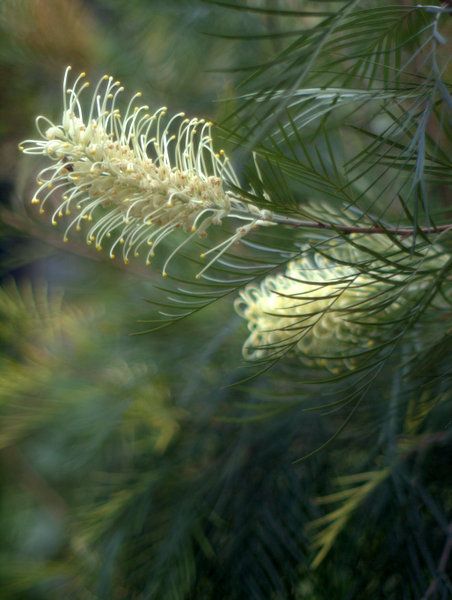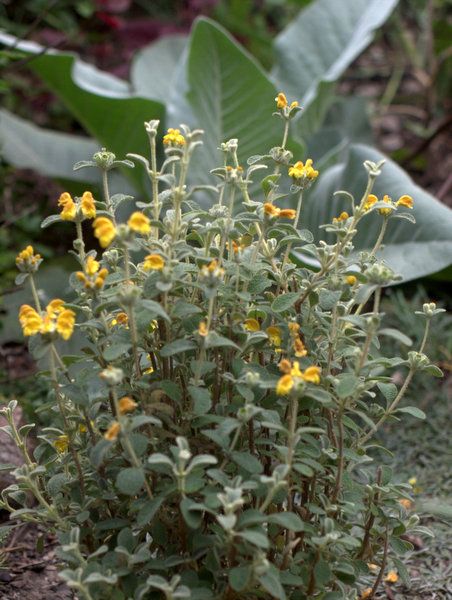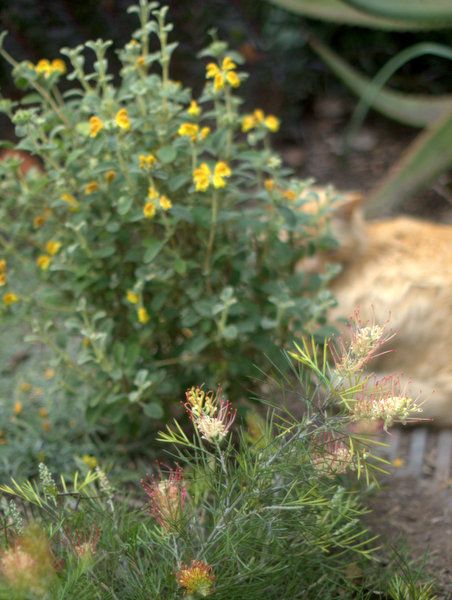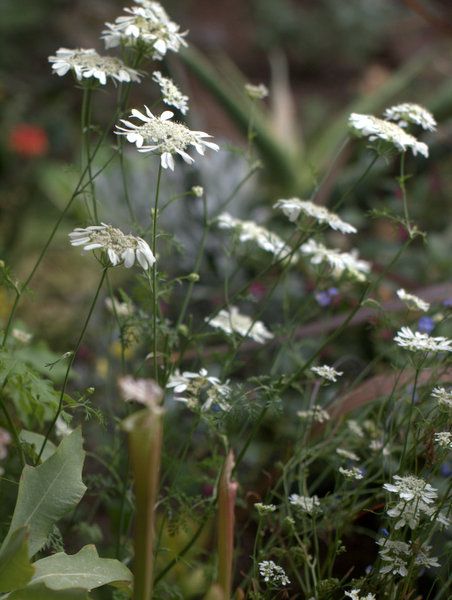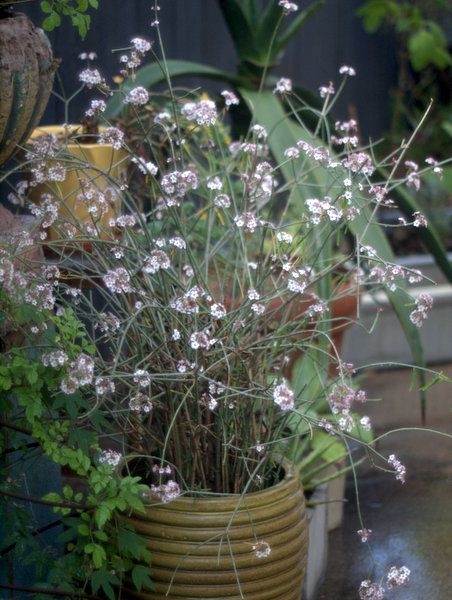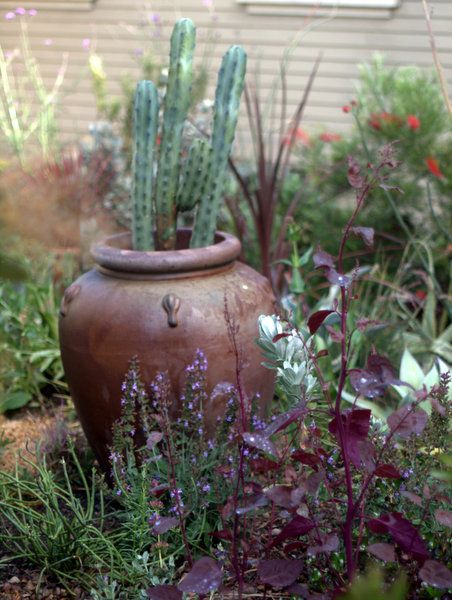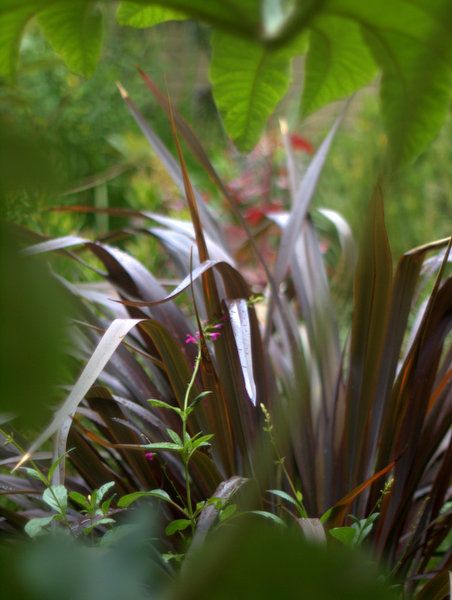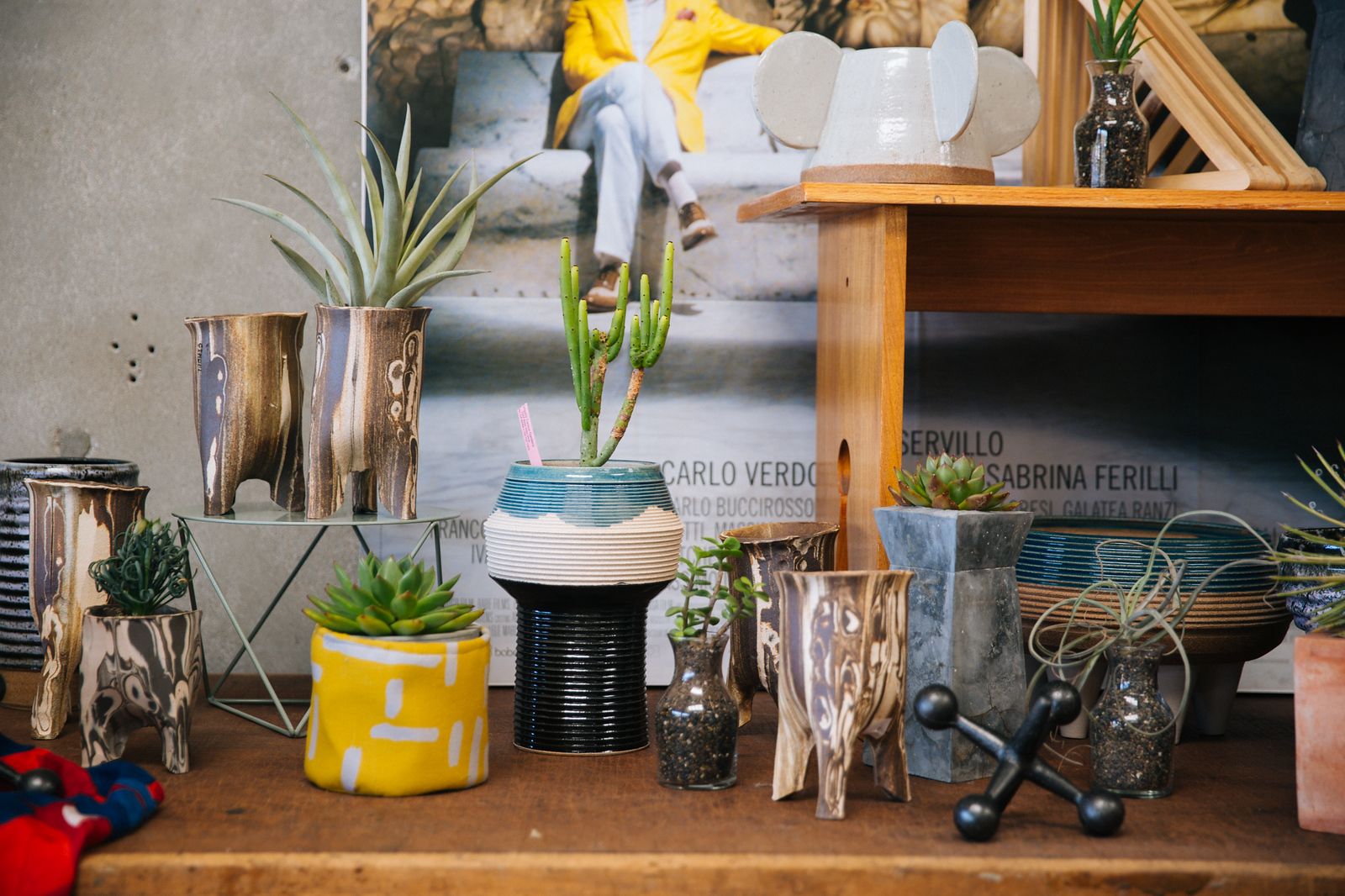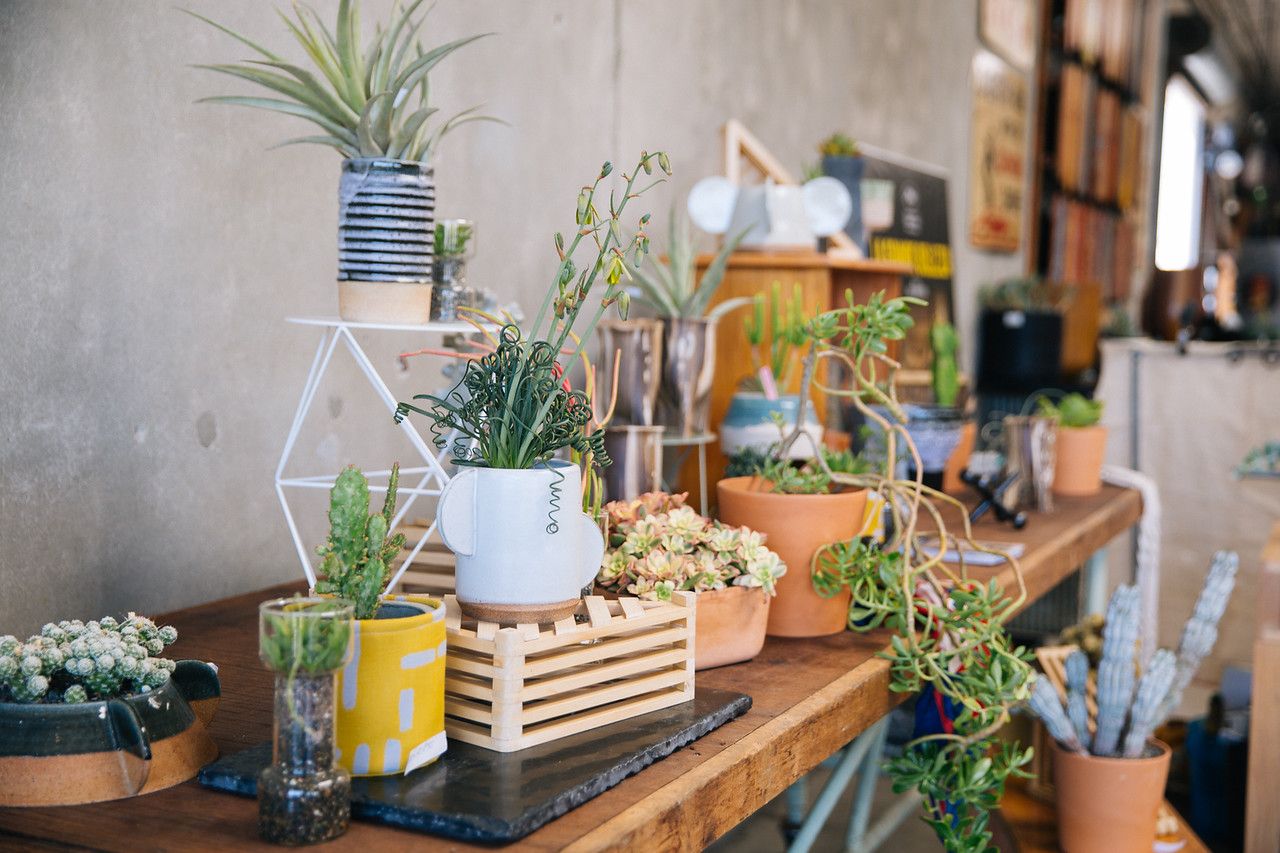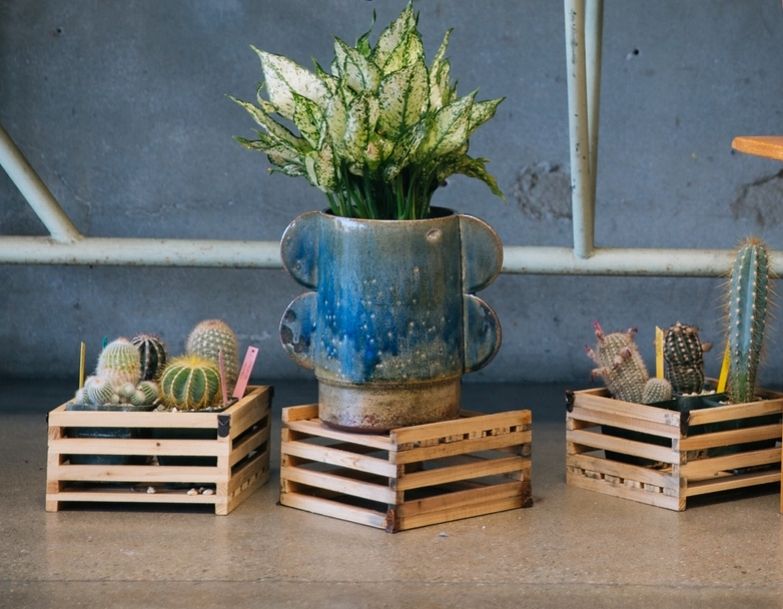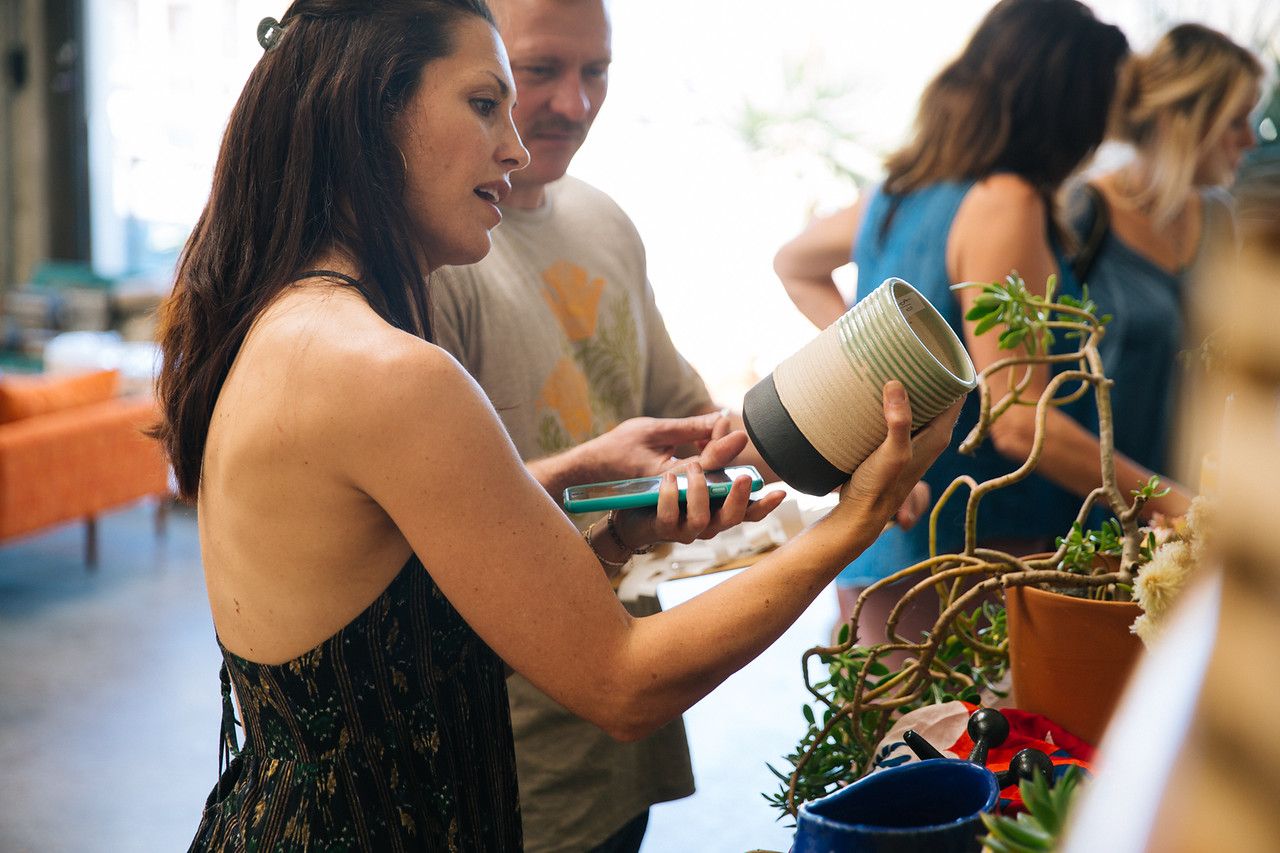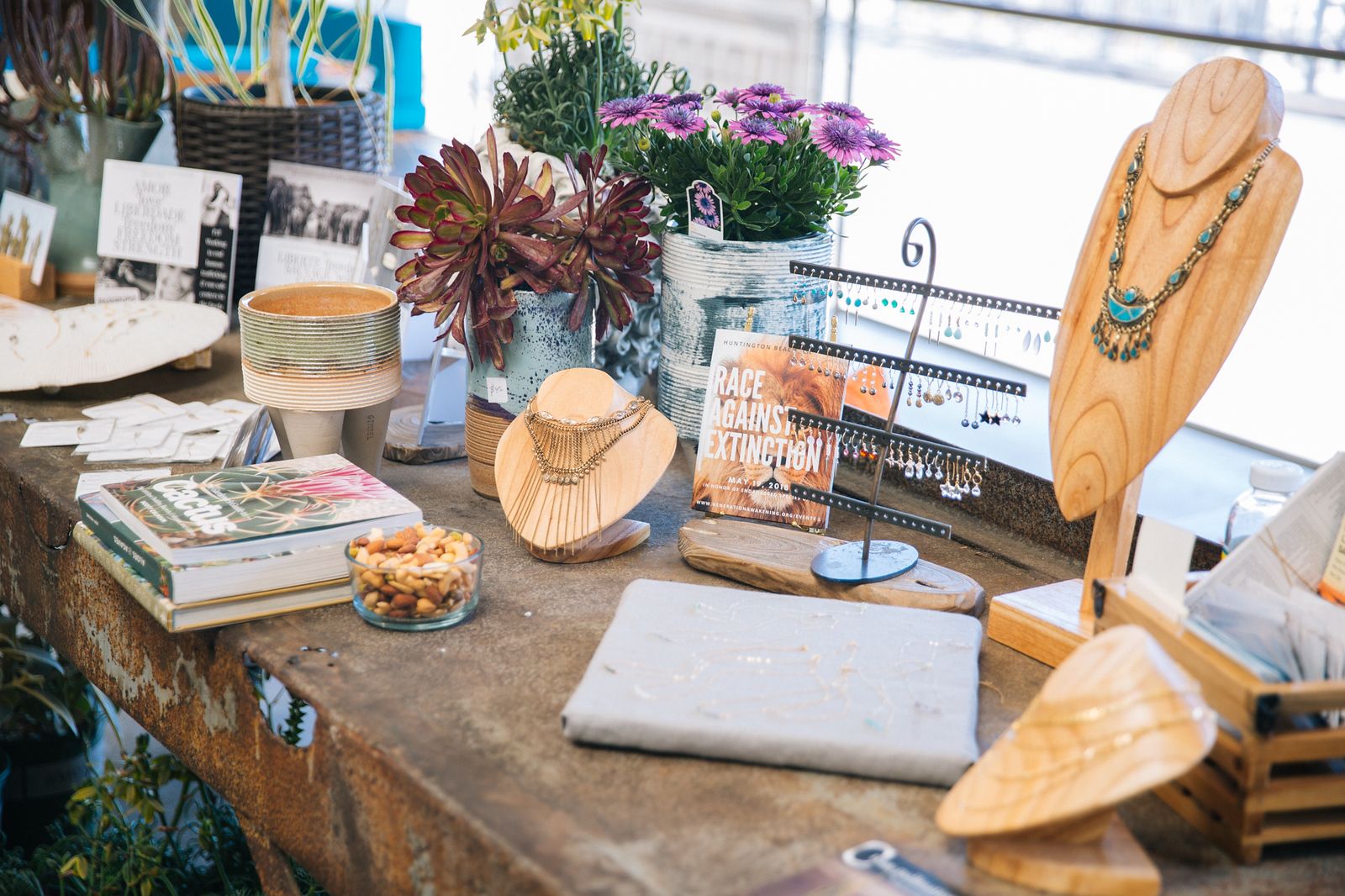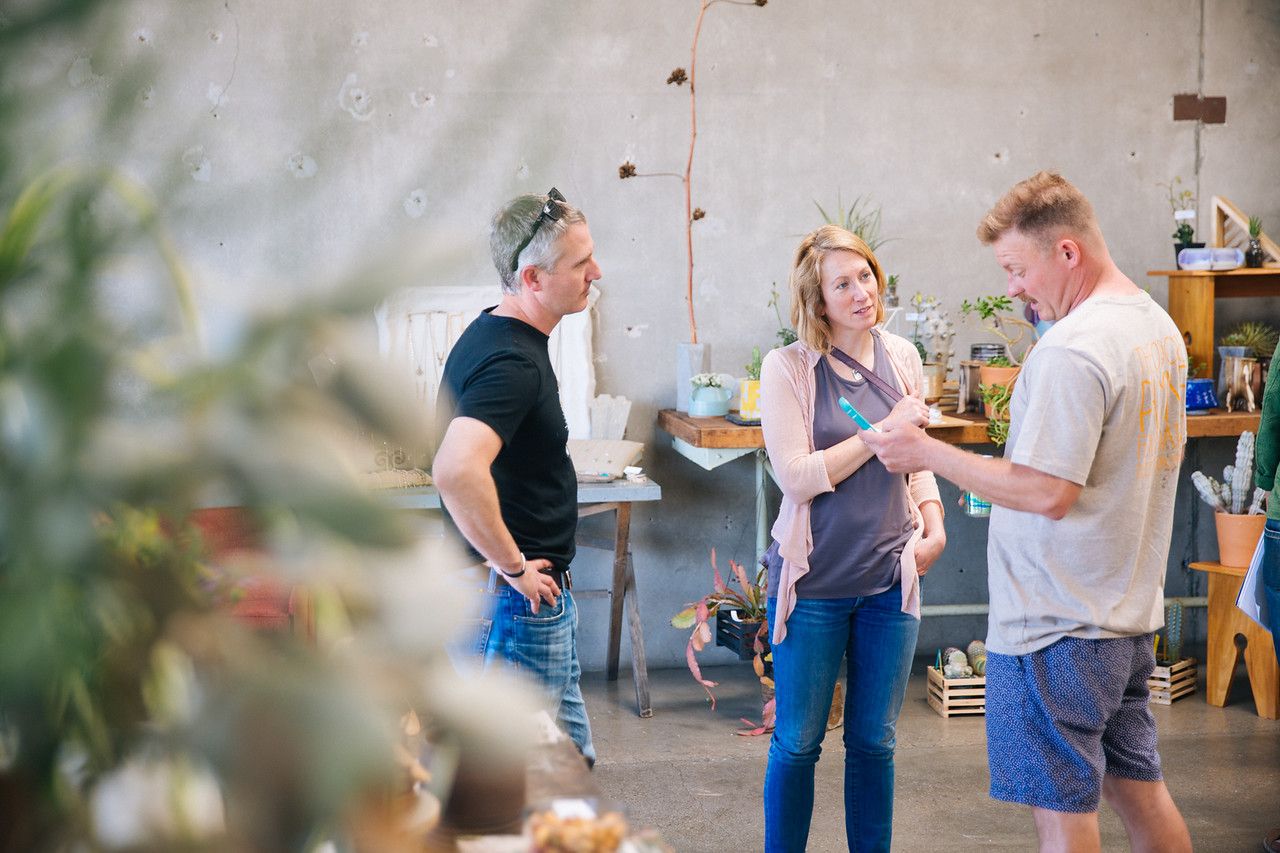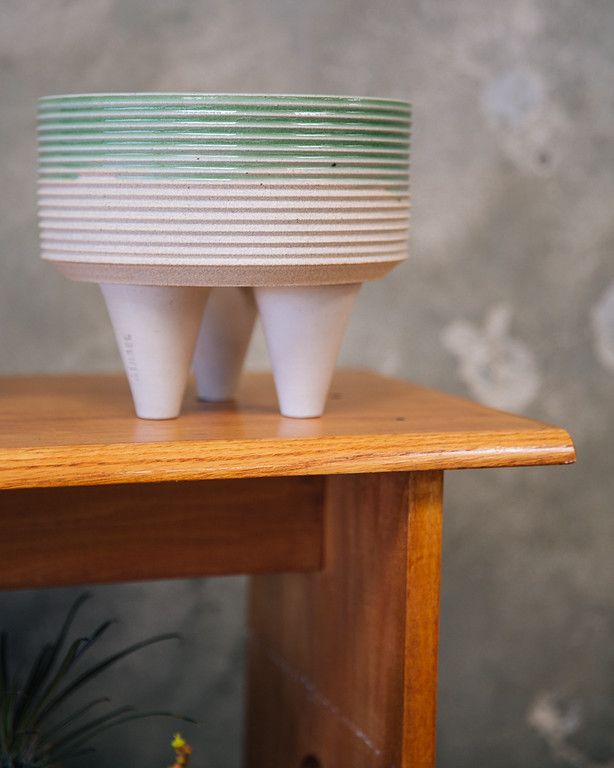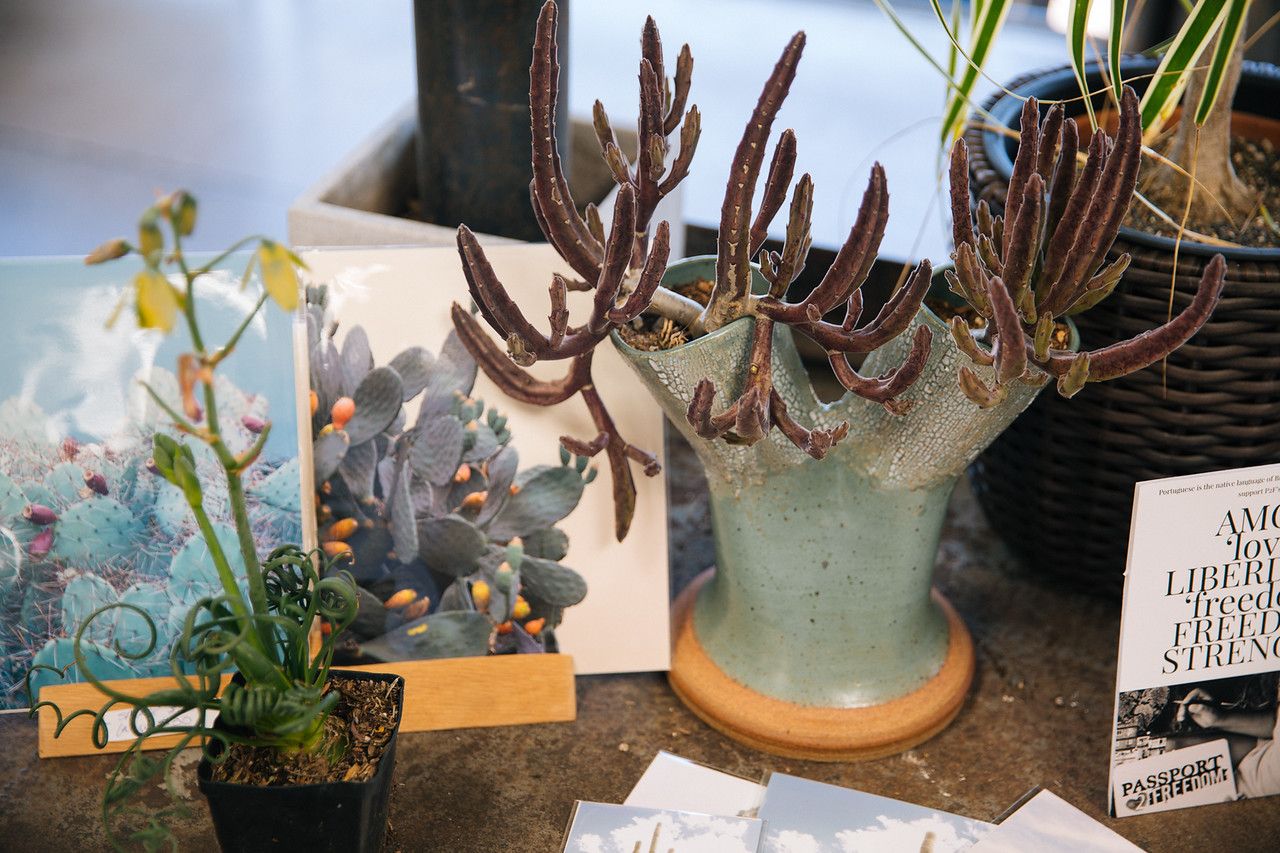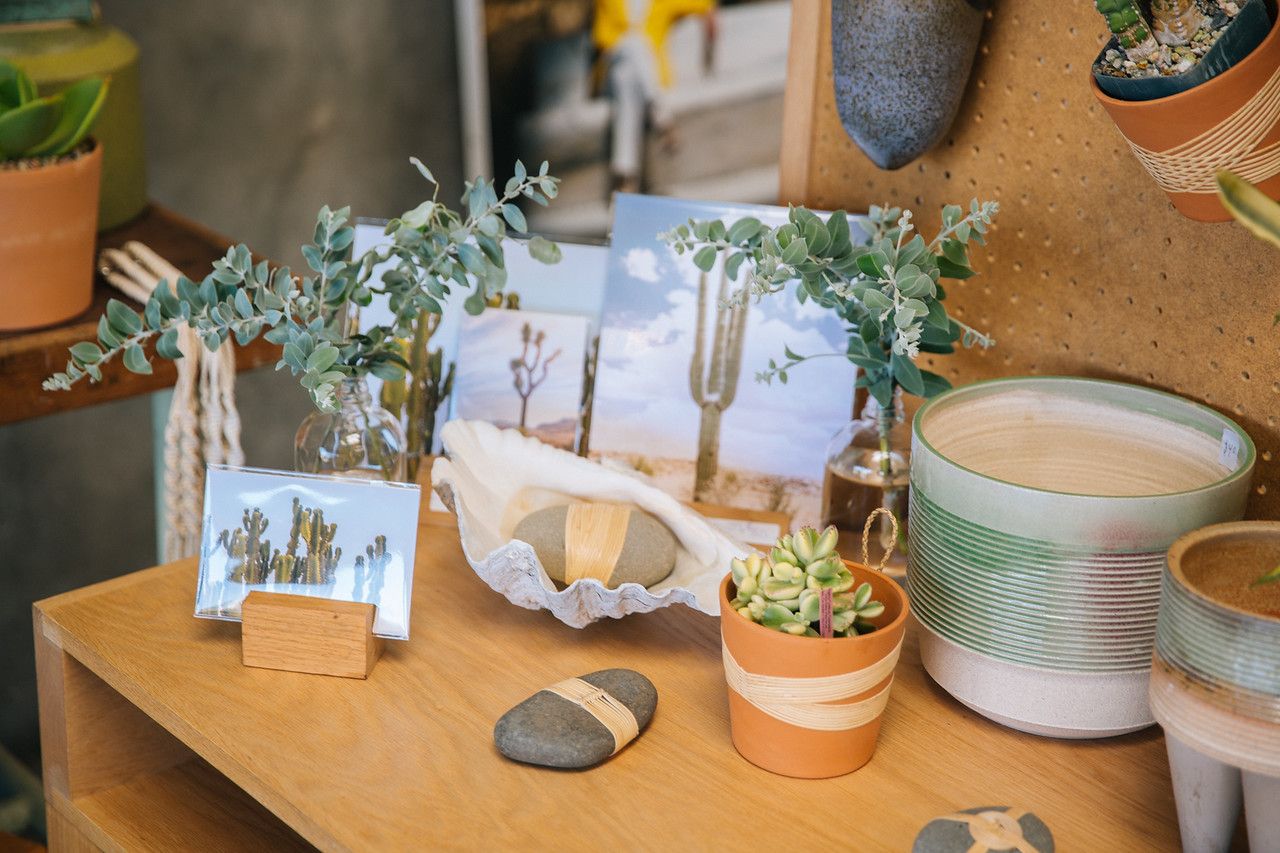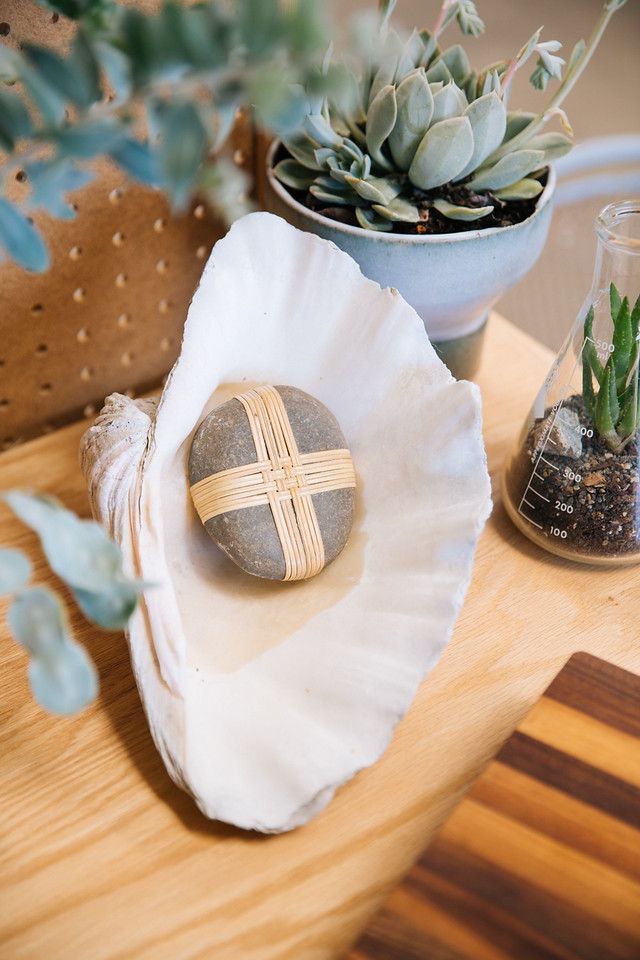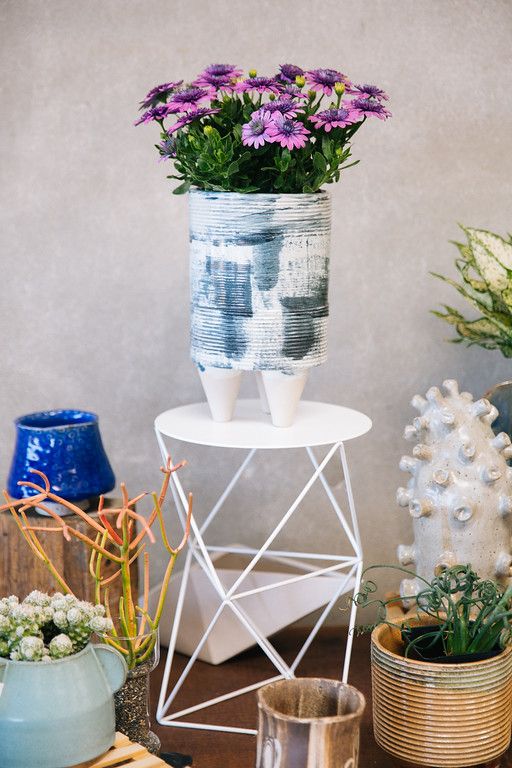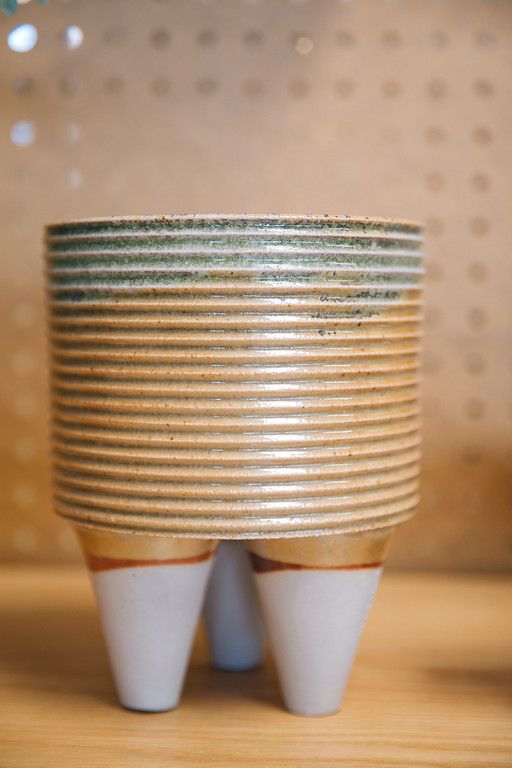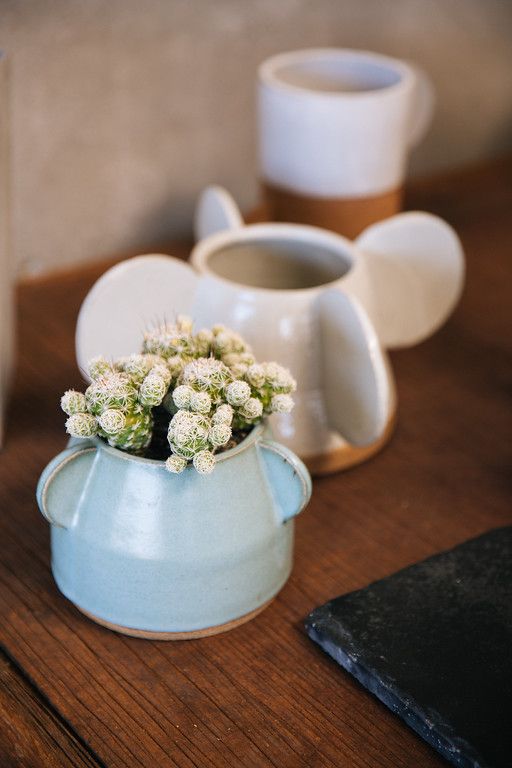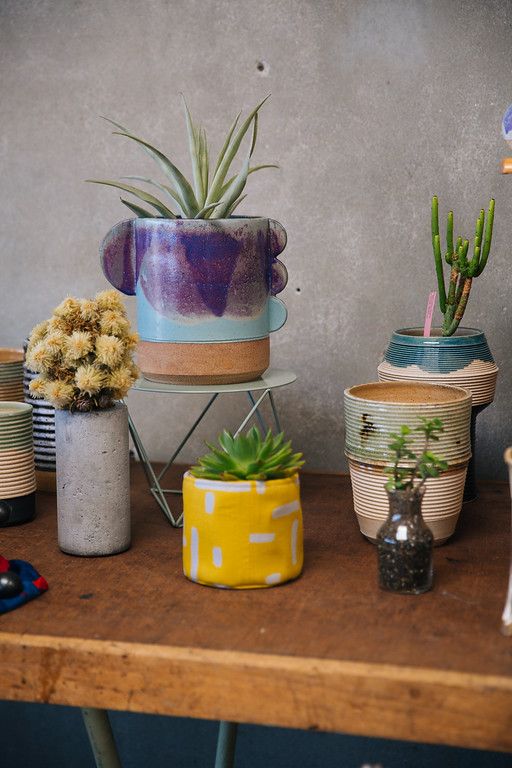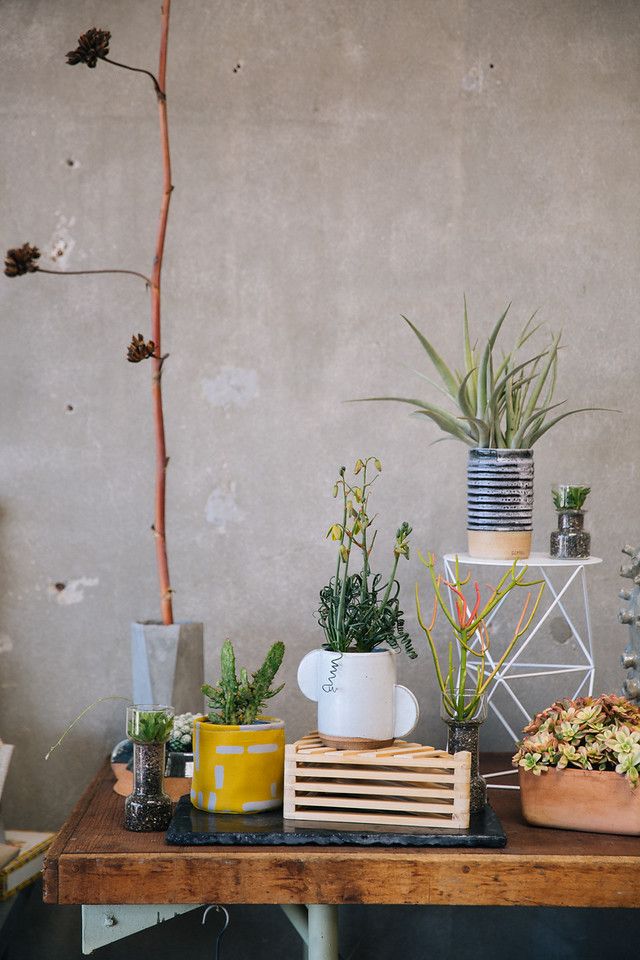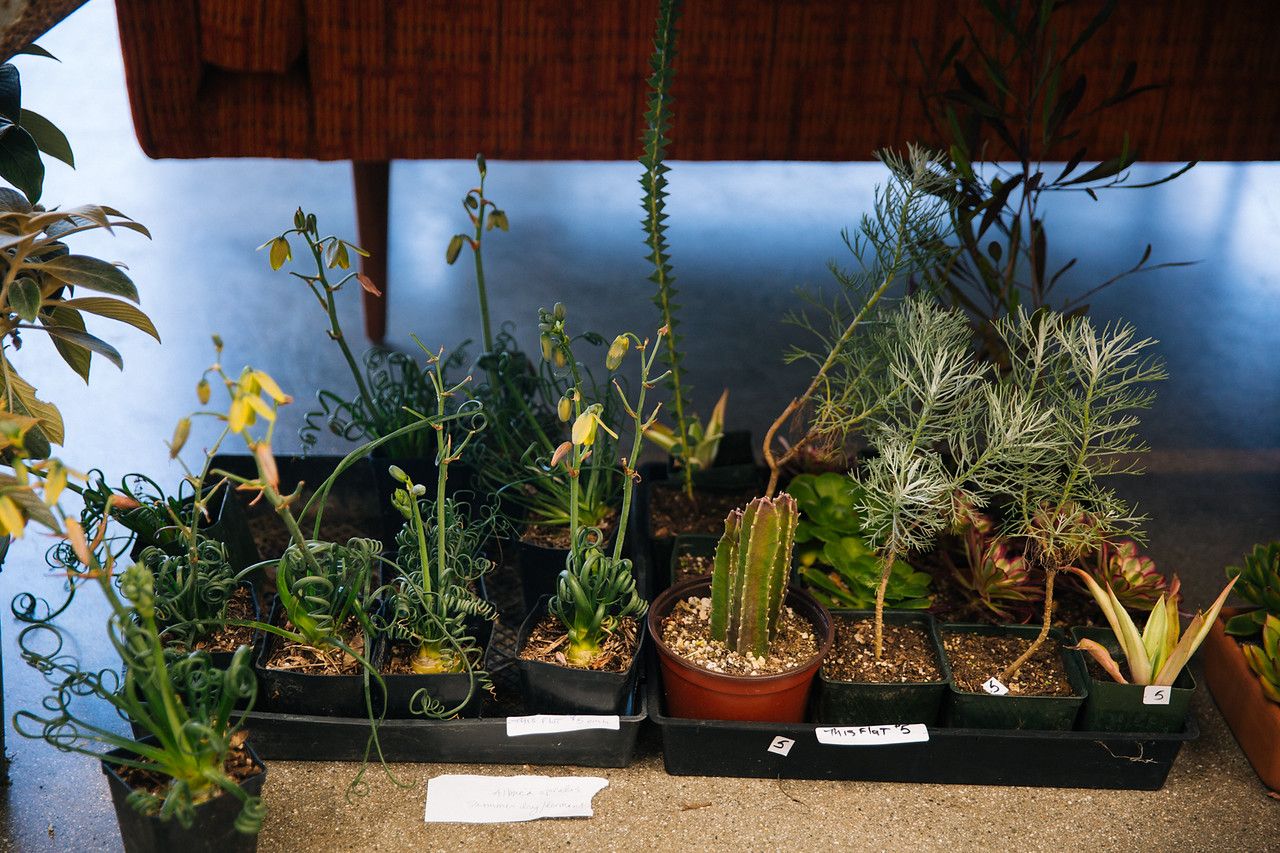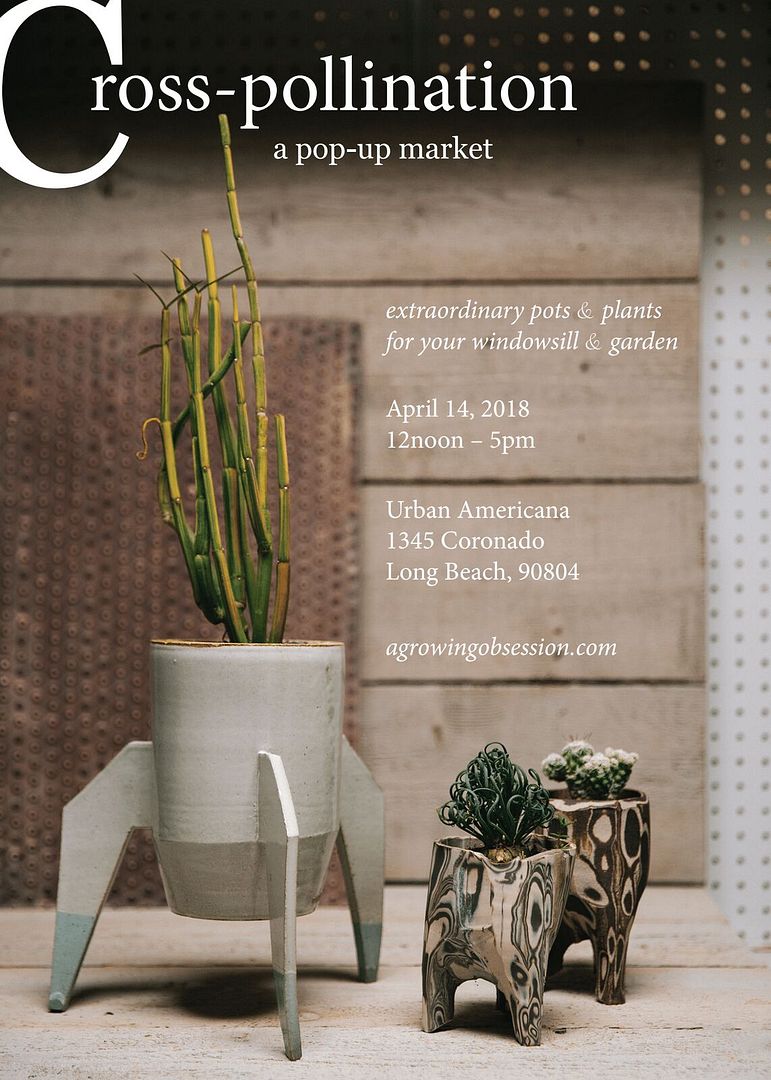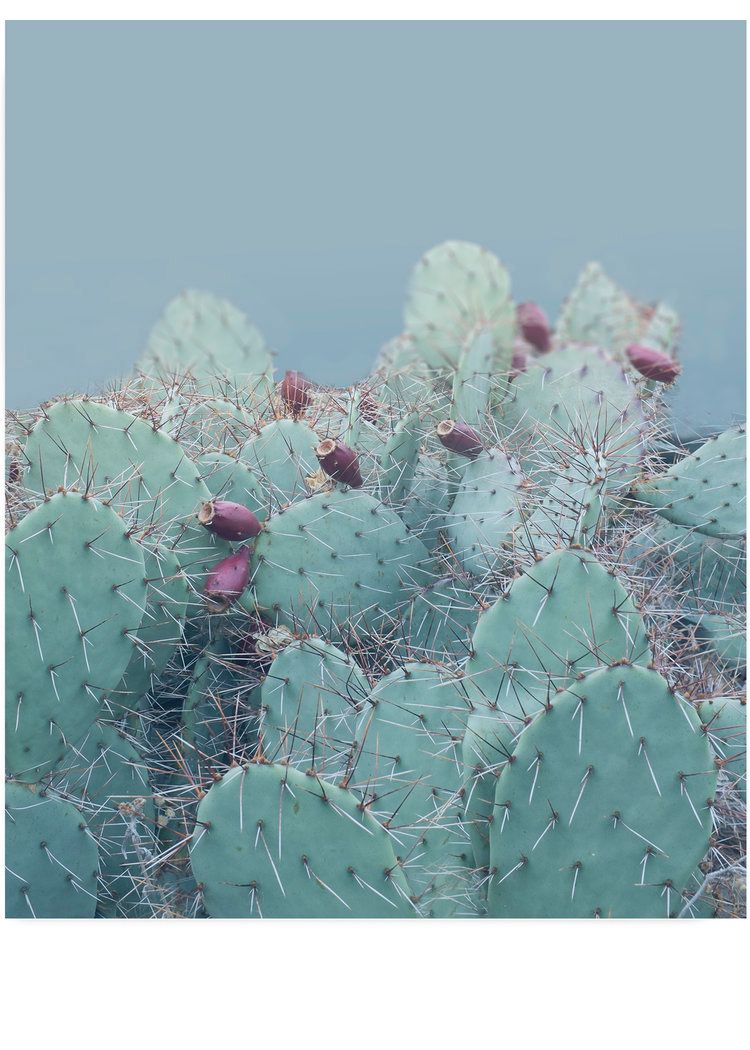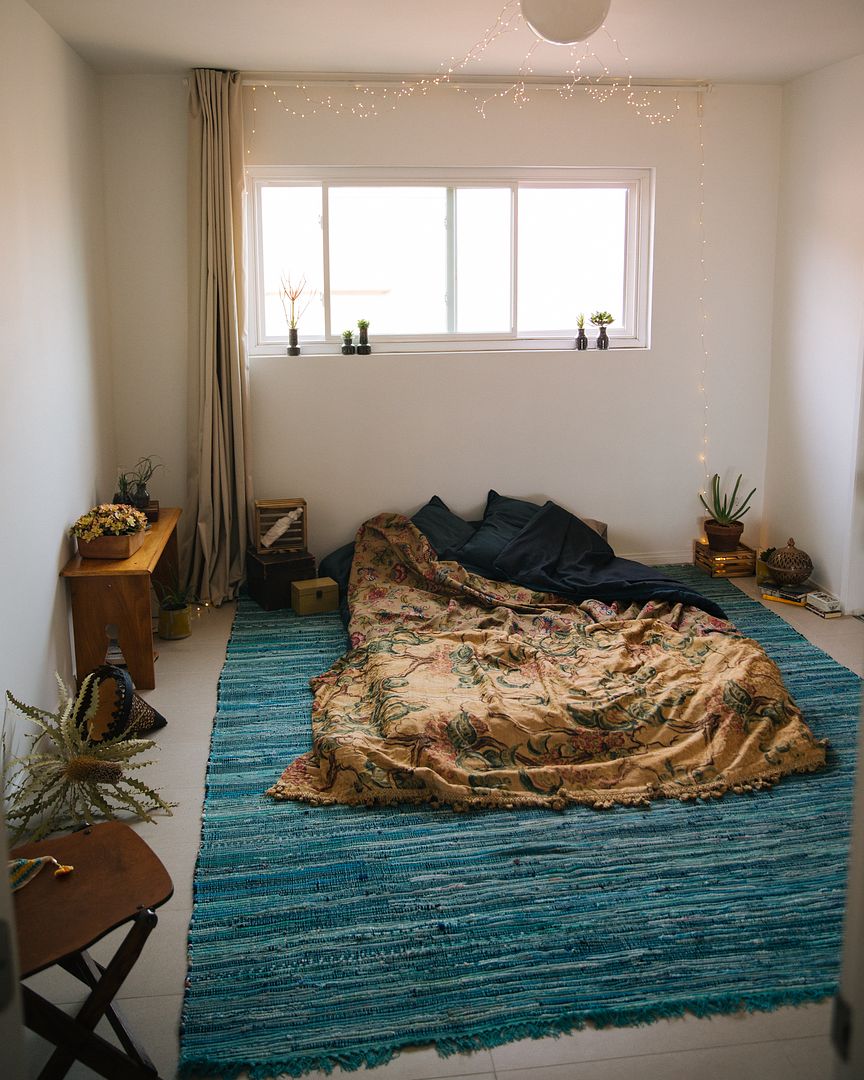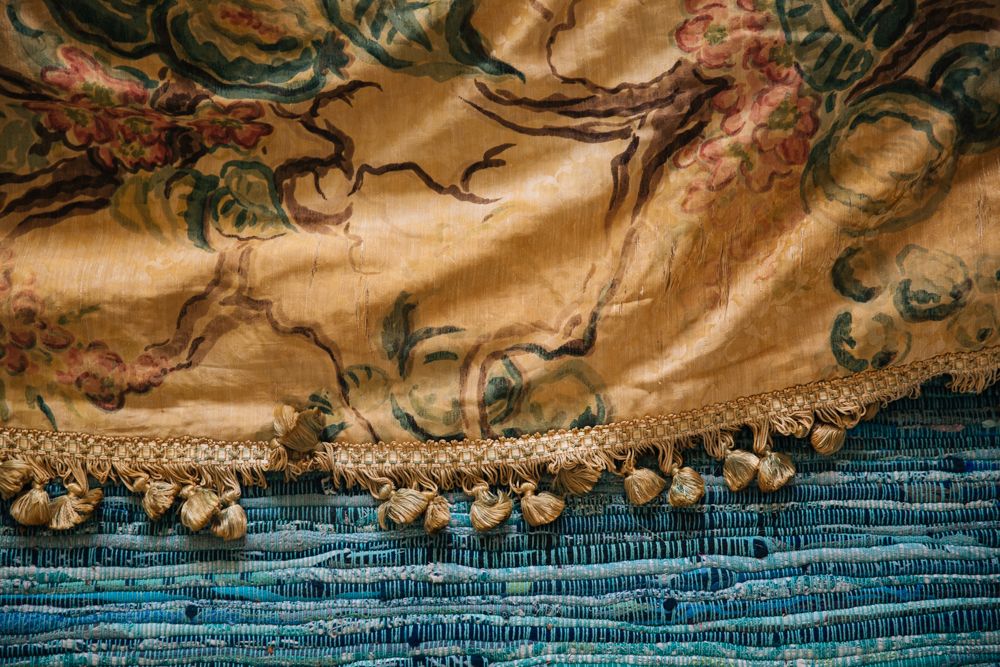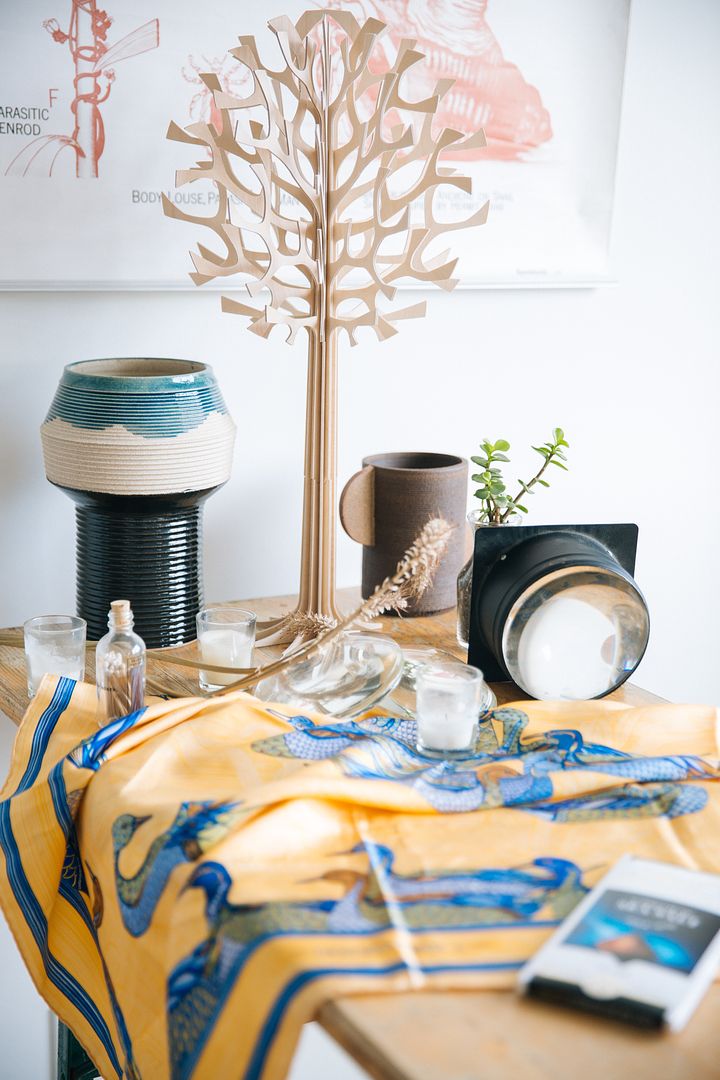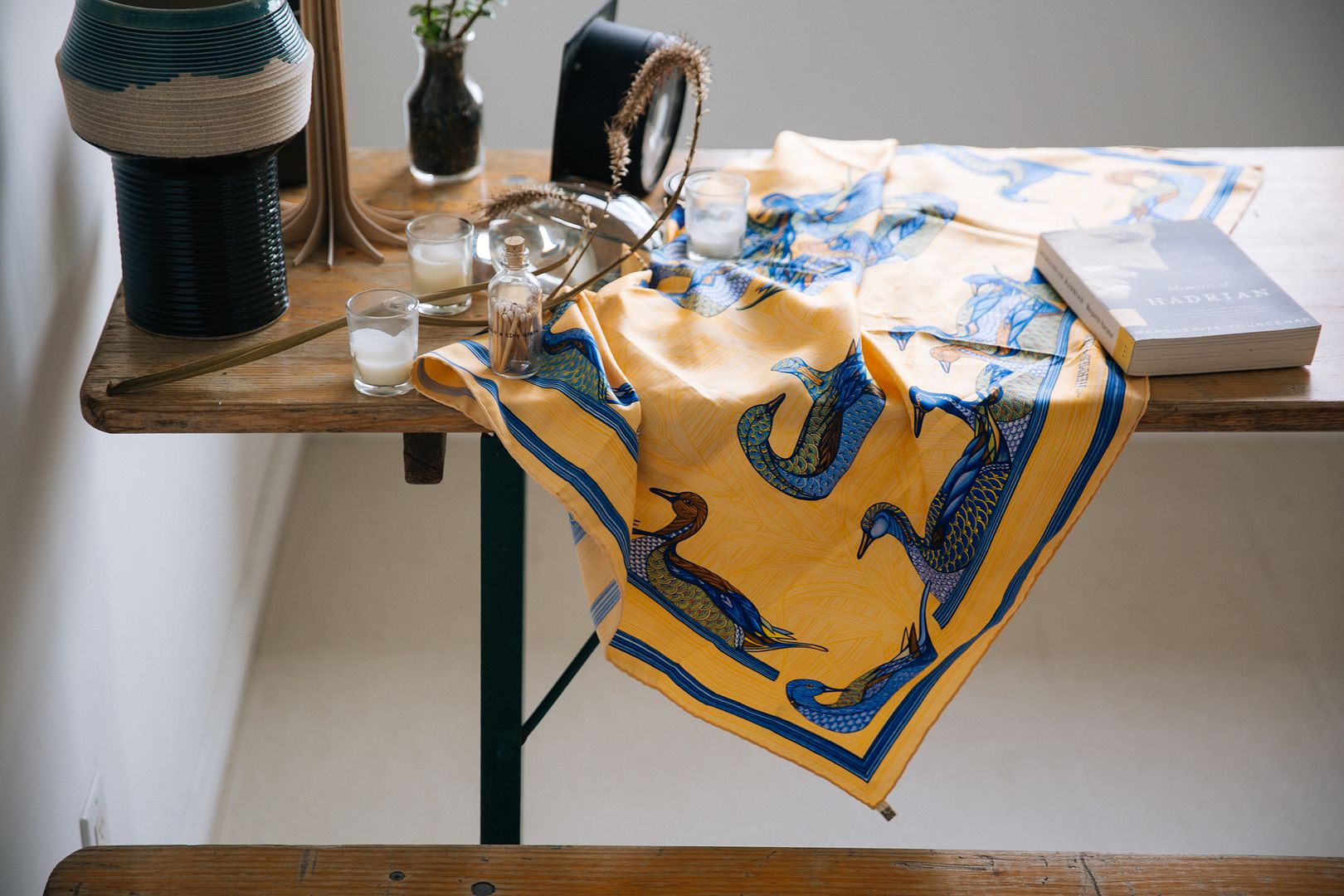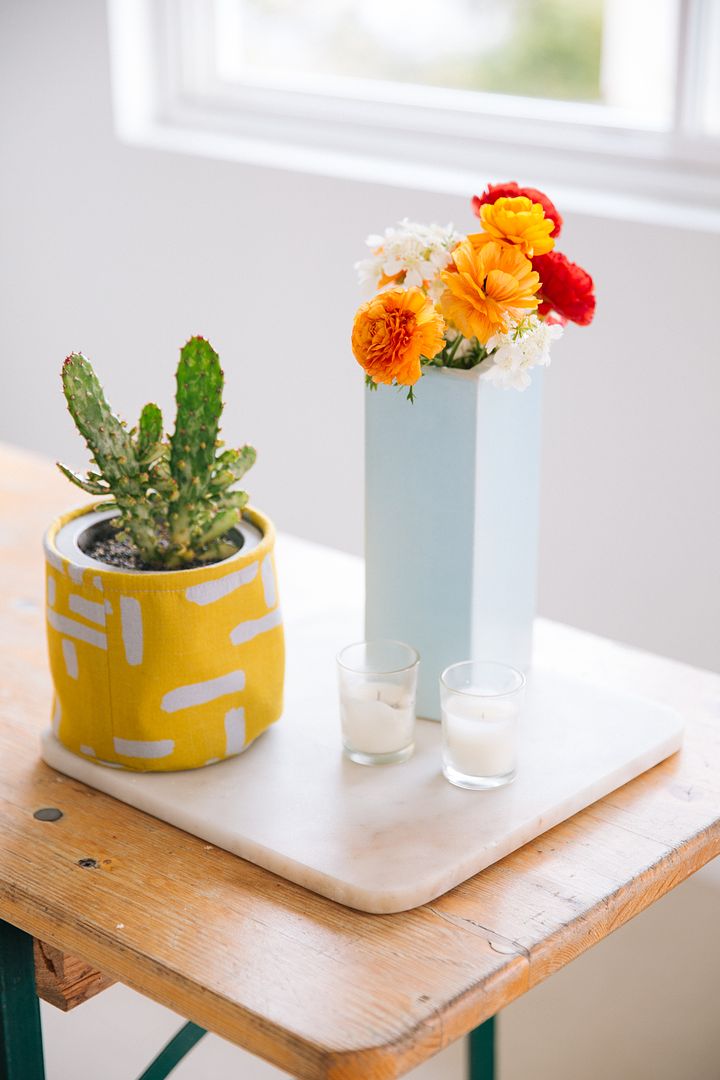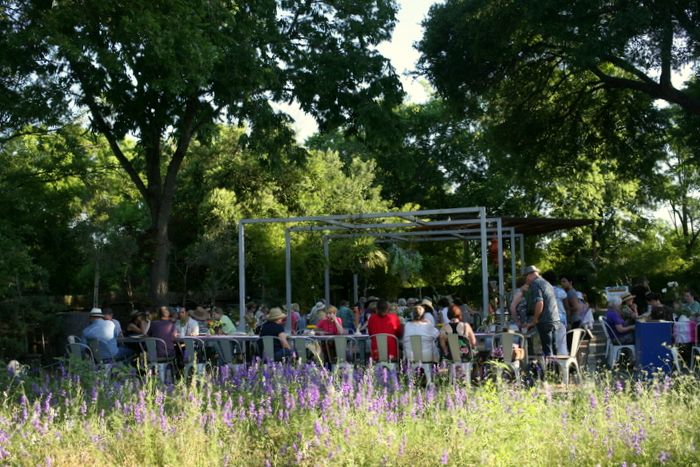
the last night’s post-tour dinner in a field of larkspur
Austin opened its friendly arms wide, Texas-style, in a full-circle welcome to garden bloggers from all over the world. These annual soirees and orgies of garden touring and plant talk are known as the Garden Bloggers Fling, and it all started here in Austin ten years ago. (Way back in the Dark Ages Before Paypal, as Diana Kirby wryly observed, one of the original co-founders along with Pam Penick, who were joined this year by Laura Wills.) The Fling is simply one of garden blogging’s great rewards. The incredibly generous sponsors are listed here.
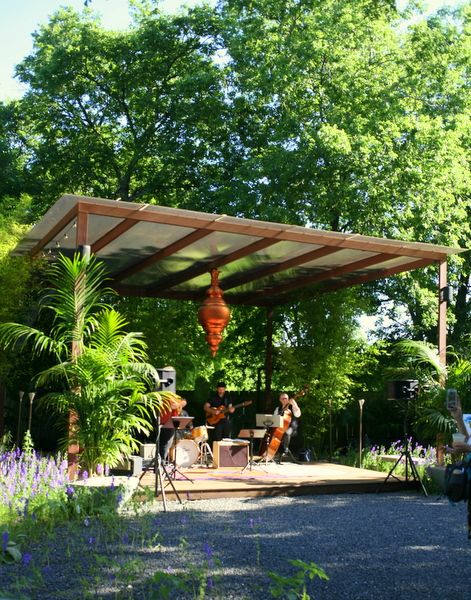
The afterparty was held on the fabulous grounds of Articulture Designs. Paul Glasse and his trio played some great Django Reinhardt-inflected Texas swing, and the inspired cocktails all began with tequila, from recipes out of Lucinda Hutson’s ¡Viva Tequila! Texas BBQ just had to be on the menu, I prayed, and it was — the brisket was divine.

Thundery skies threatened at the Lady Bird Johnson Wildflower Center, the first stop on the tour…and it was no idle threat. What ensued was an epic soaking rain that had us scattering through the wildflower fields for cover, triggering local flash flood warnings and vestigial memories in me of similar childhood rains in my now drought-prone home. My shoes and socks were soaked the rest of the day, but it was an indelible, emotion-charged Here Comes The Rain Again moment that vividly conveyed the source of all the green lushness of Austin in late spring. (When not experiencing drought, average rainfall in Austin ranges 32-36 inches, and the heaviest rainfall occurs in May and September.)

For me the iconic plants on the tour were the oaks, the yuccas and dasylirions, the hesperaloes everywhere in bloom, and the majestic whale’s tongue agaves, which are one of the handful of agaves hardy enough to overwinter outdoors in Austin. Casually chatting about the merits of the various hesperaloe varieties on the market with the creator of many of them, David Salman of High Country Gardens, is a one-of-a-kind experience typical of the Fling.

The First Lady’s legacy at the Wildflower Center is not a demure homage to pretty wildflowers, but a kick-ass, cutting edge, contemporary setting for Texas’ incredible range of native plants.

And then there was that stonework. The pale, luminous limestone, kurst, marl — whatever you call it, that is the geologic evidence of Austin’s ancient shallow seas, is everywhere, as cladding for houses and garden structures, edging plantings, laid down in paths, stepping stones. It bestows on Austin’s houses and gardens an unmistakably strong regional style. Along with the stock tanks and giant gleaming cisterns, the limestone is part of a vernacular design vocabulary that, as far as I know, is uniquely Austin’s own.
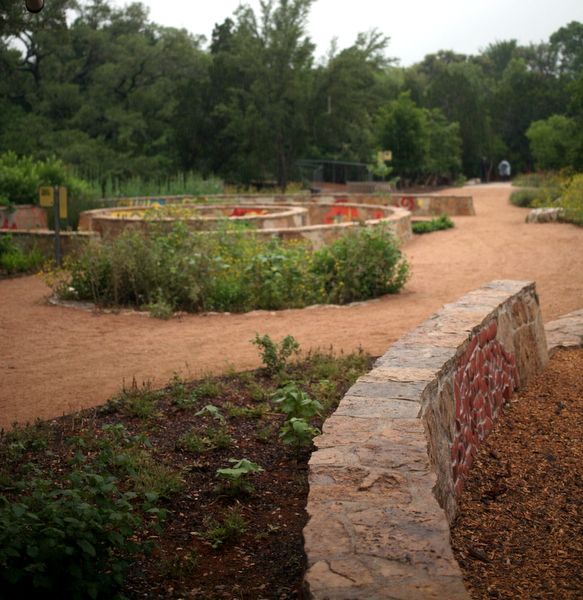
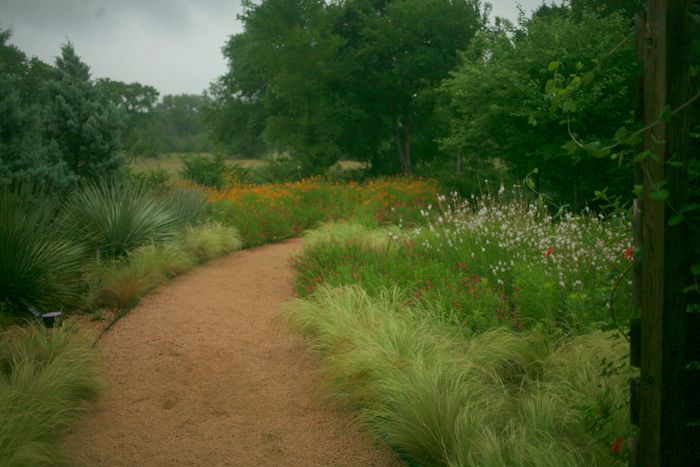
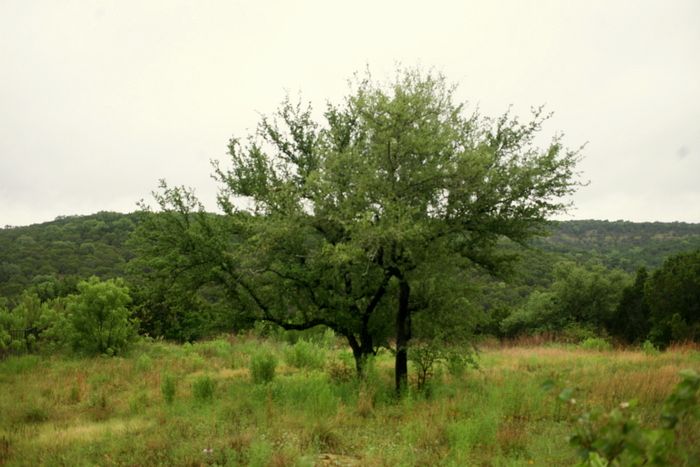
I’ll be unpacking more impressions from the trip to Austin in the coming weeks. Warmest thanks to the planners and sponsors who helped make this visit to Austin possible — and to all the old and new friends I met on the tour.


